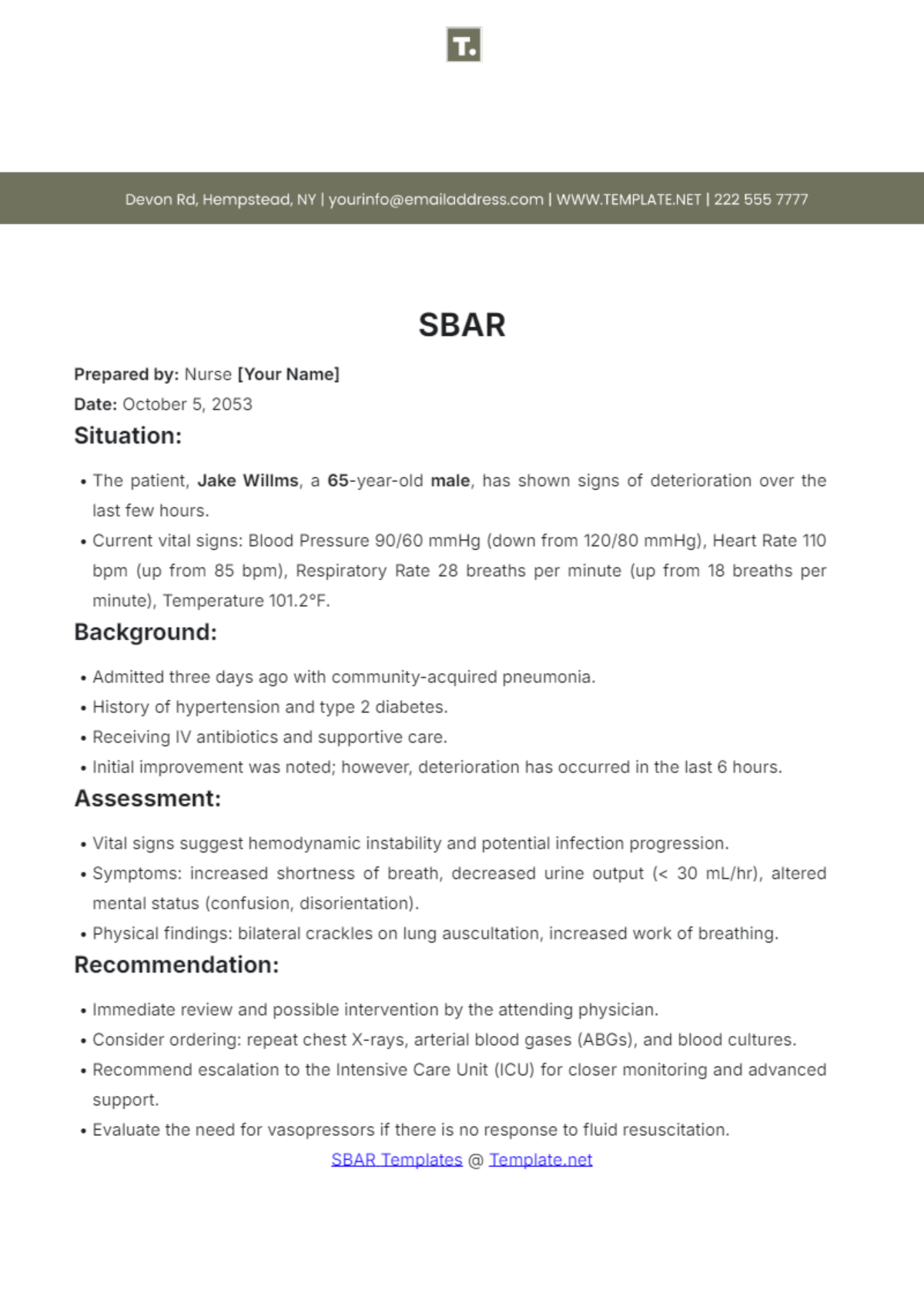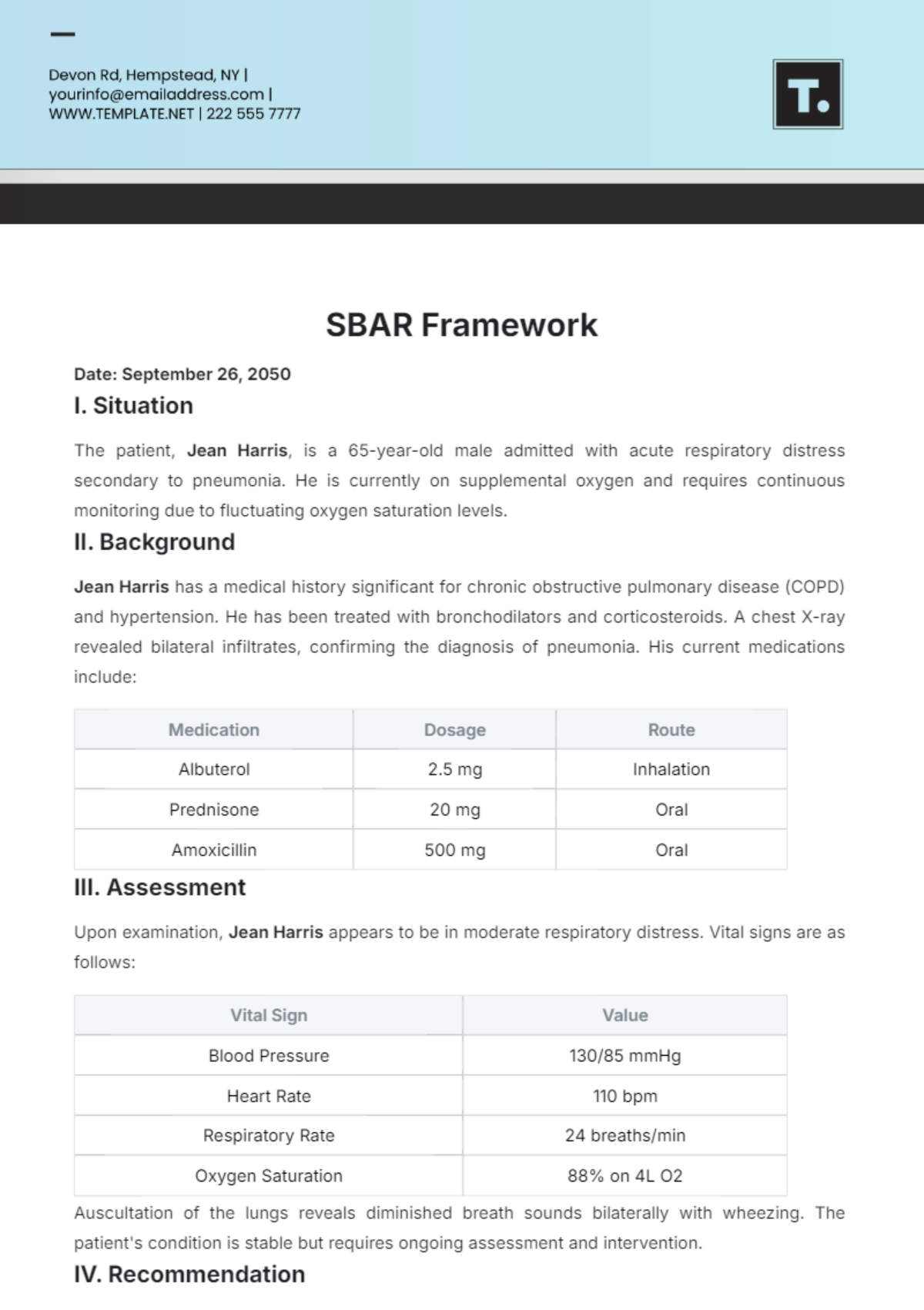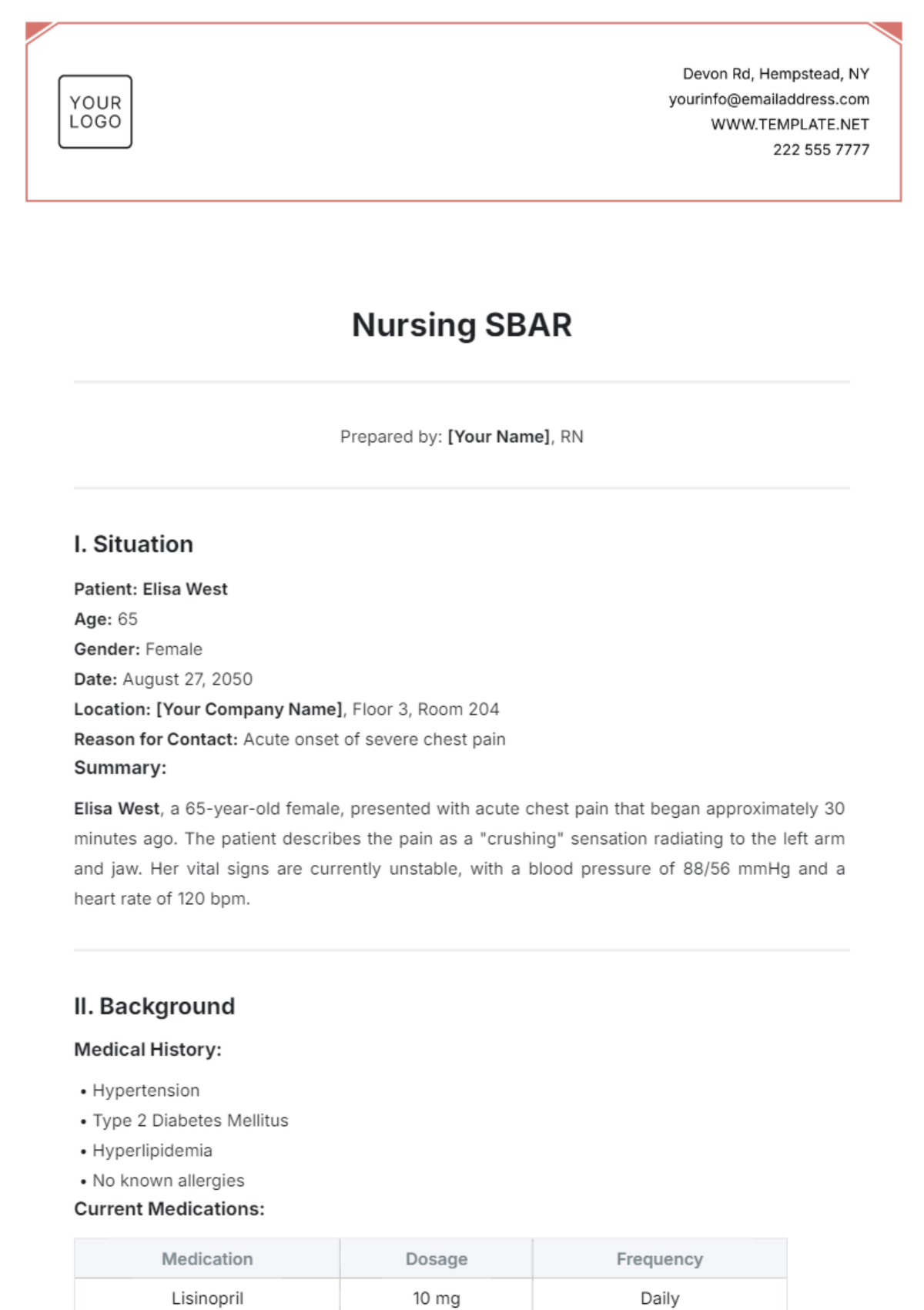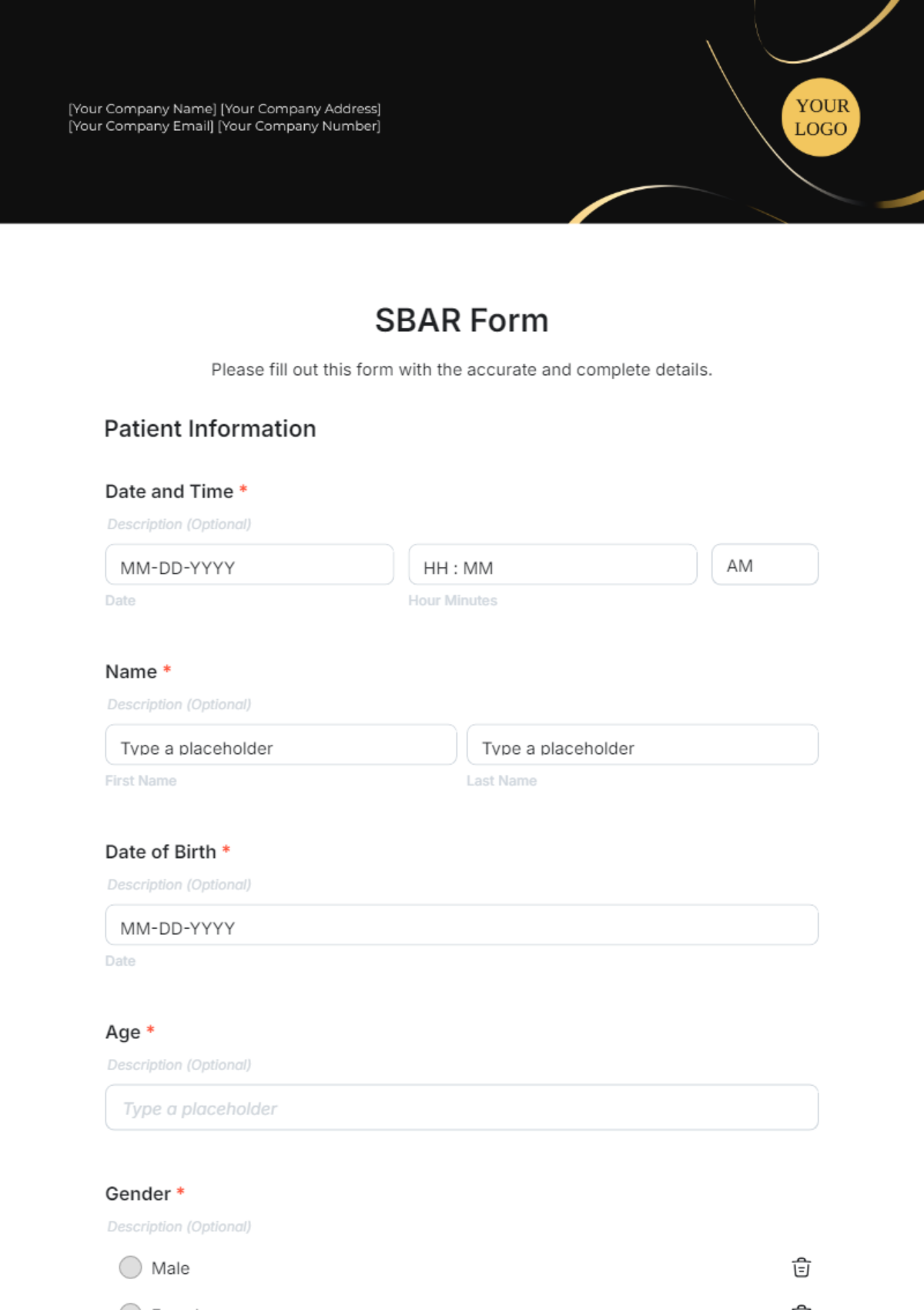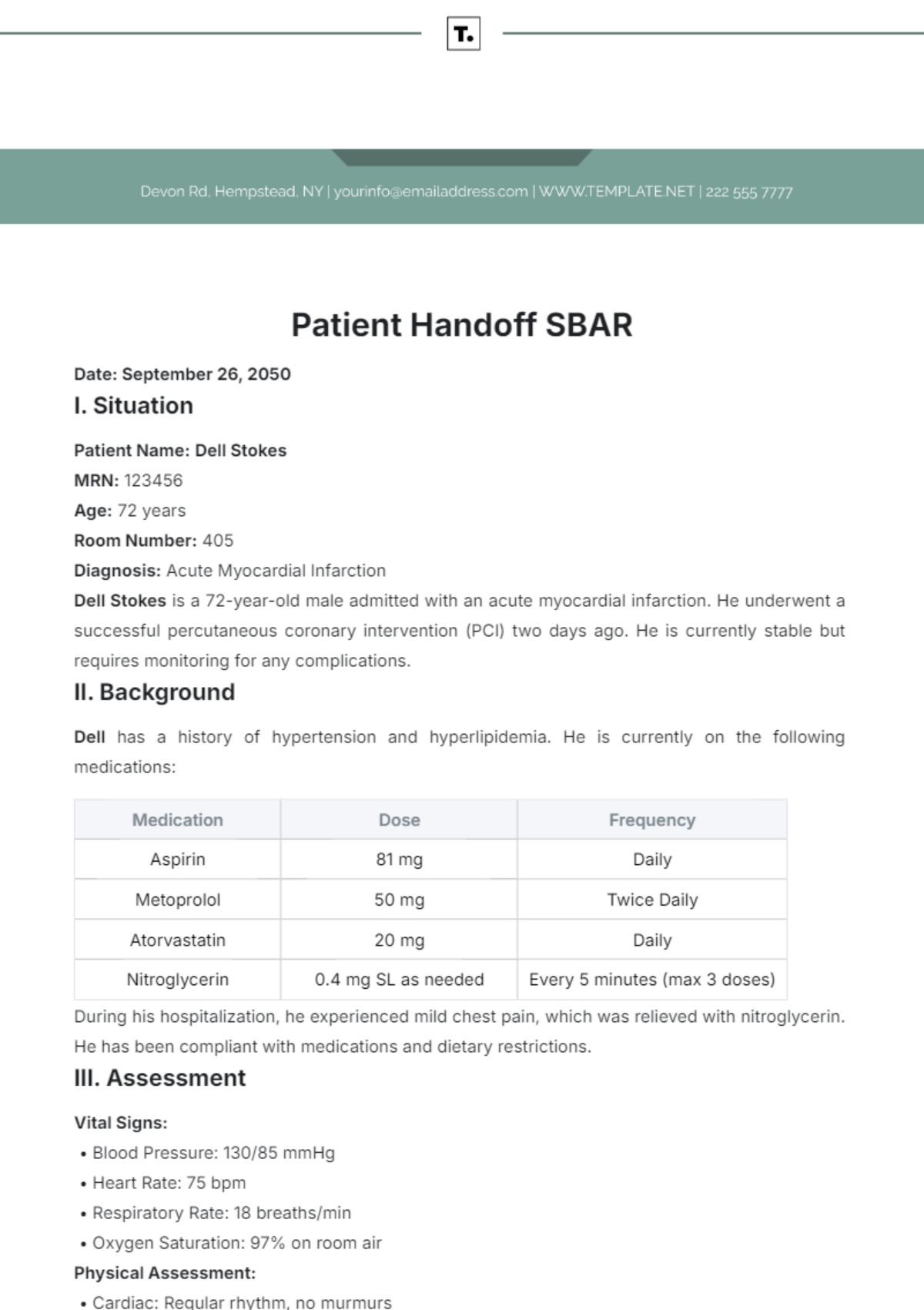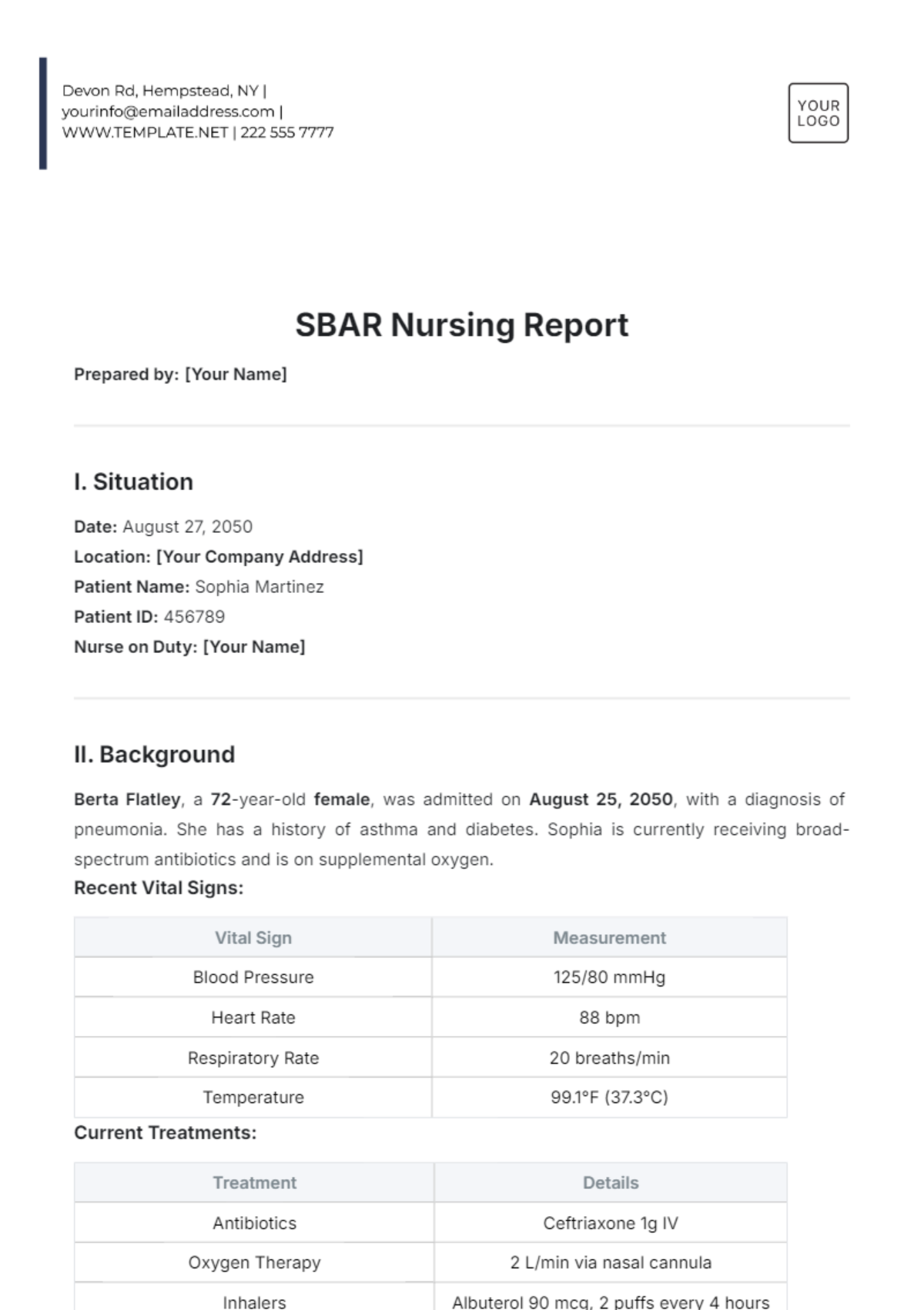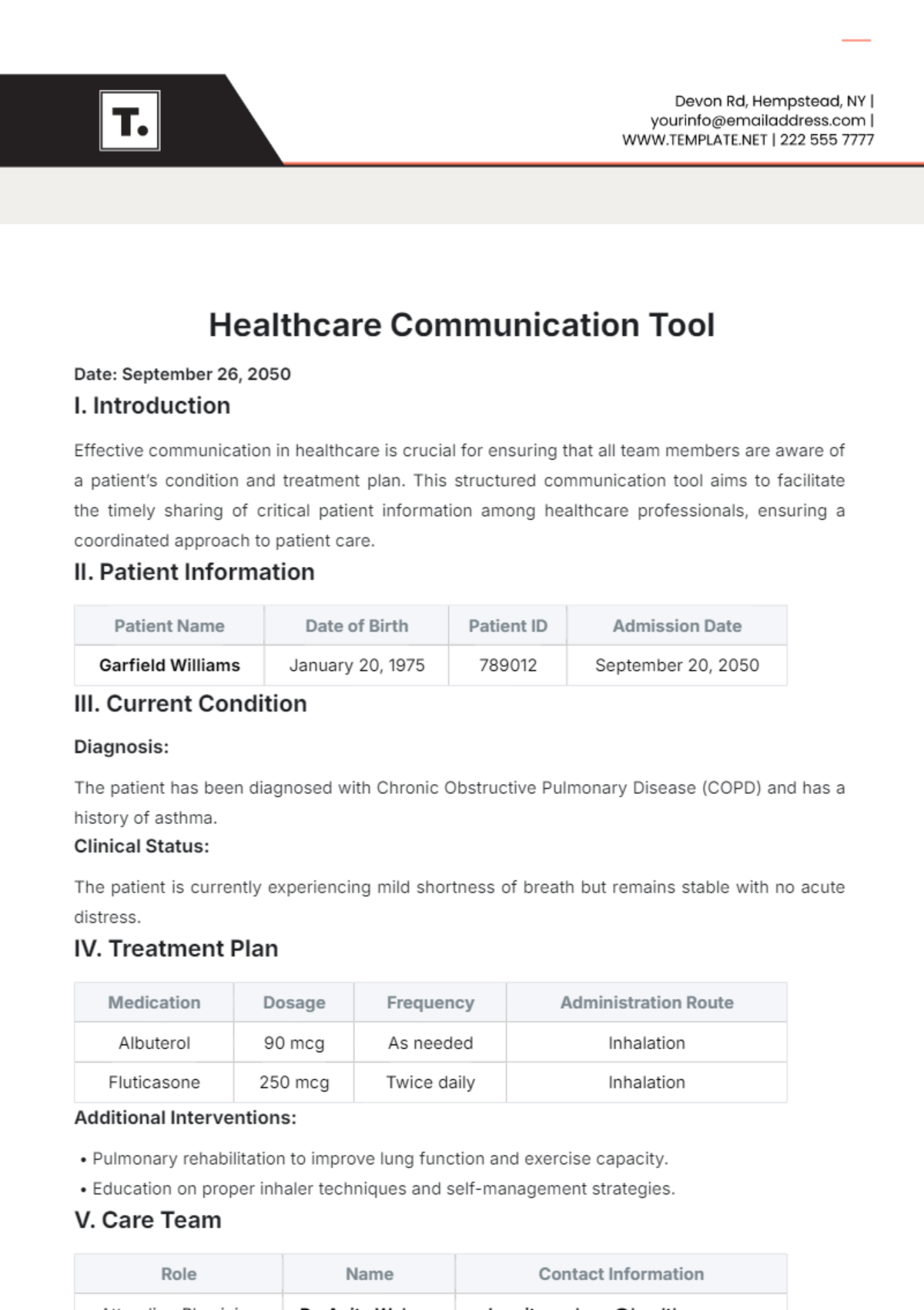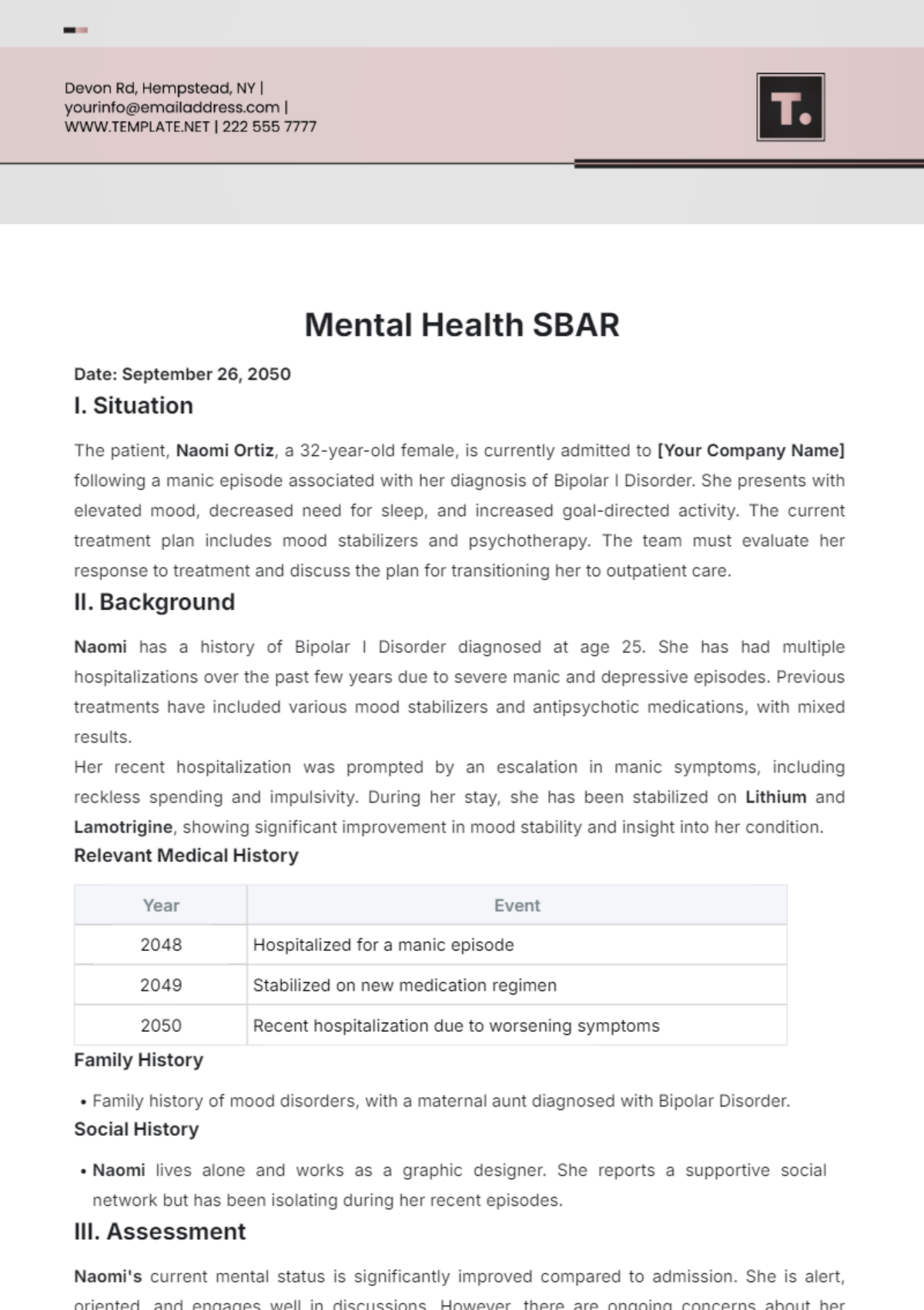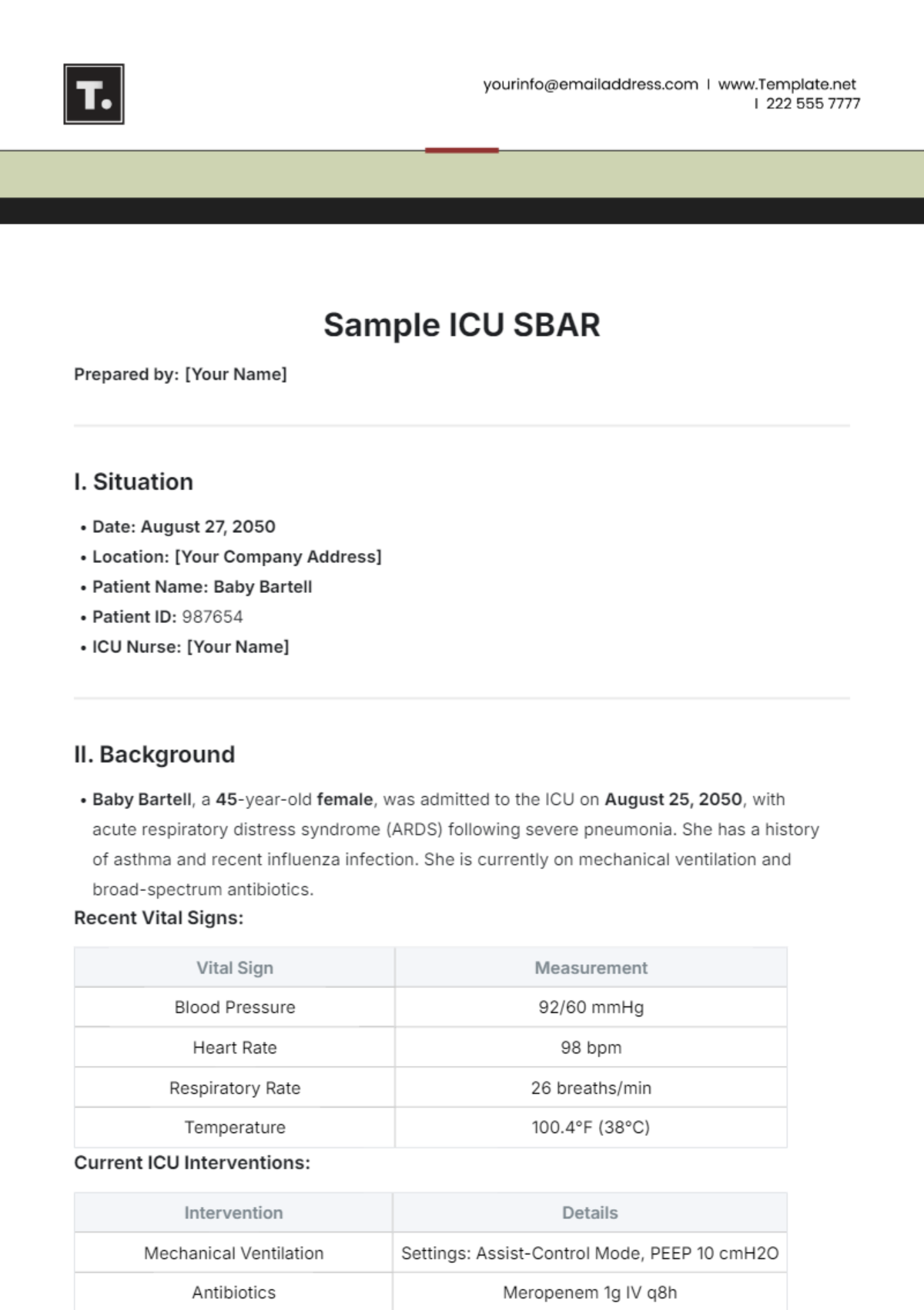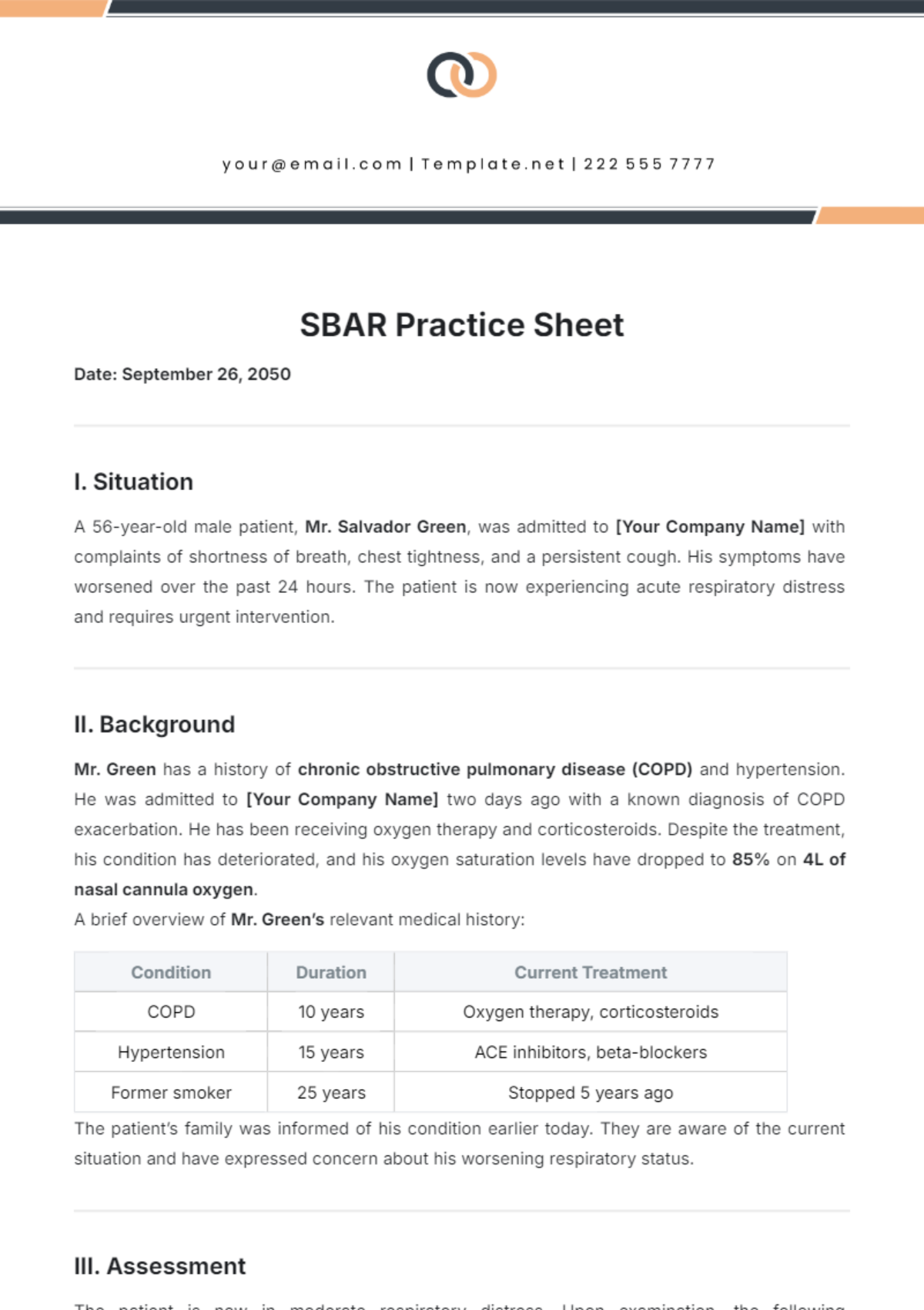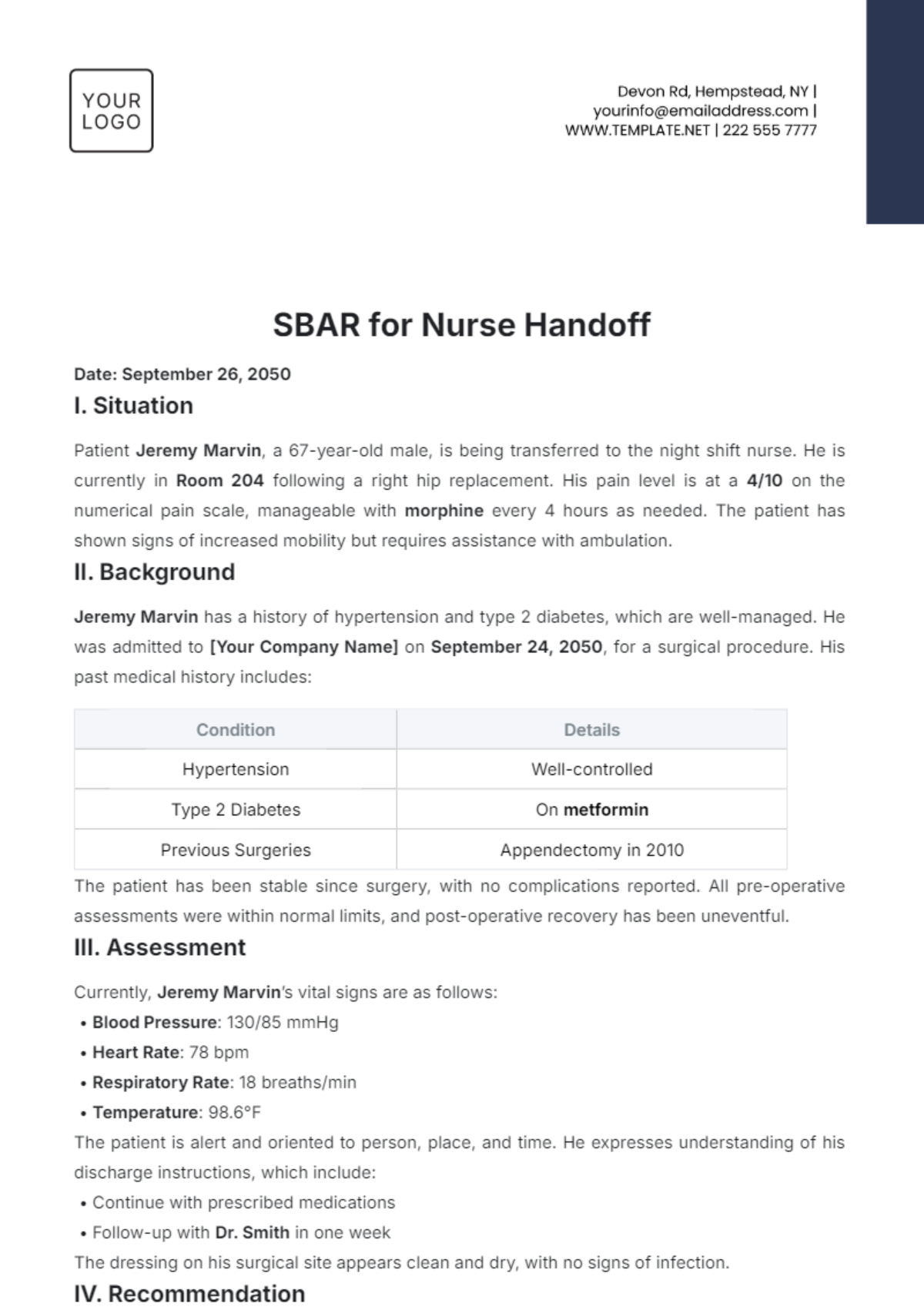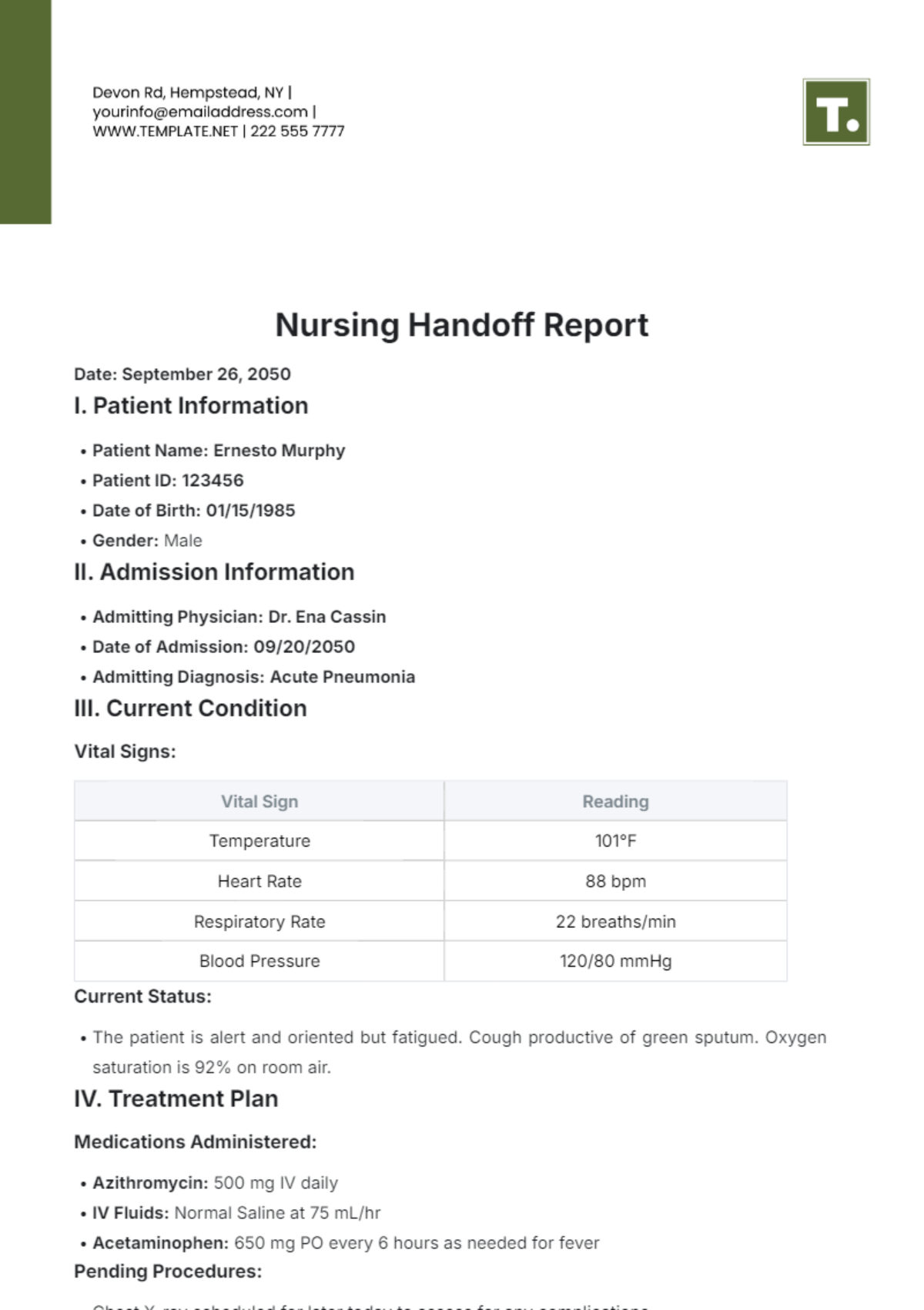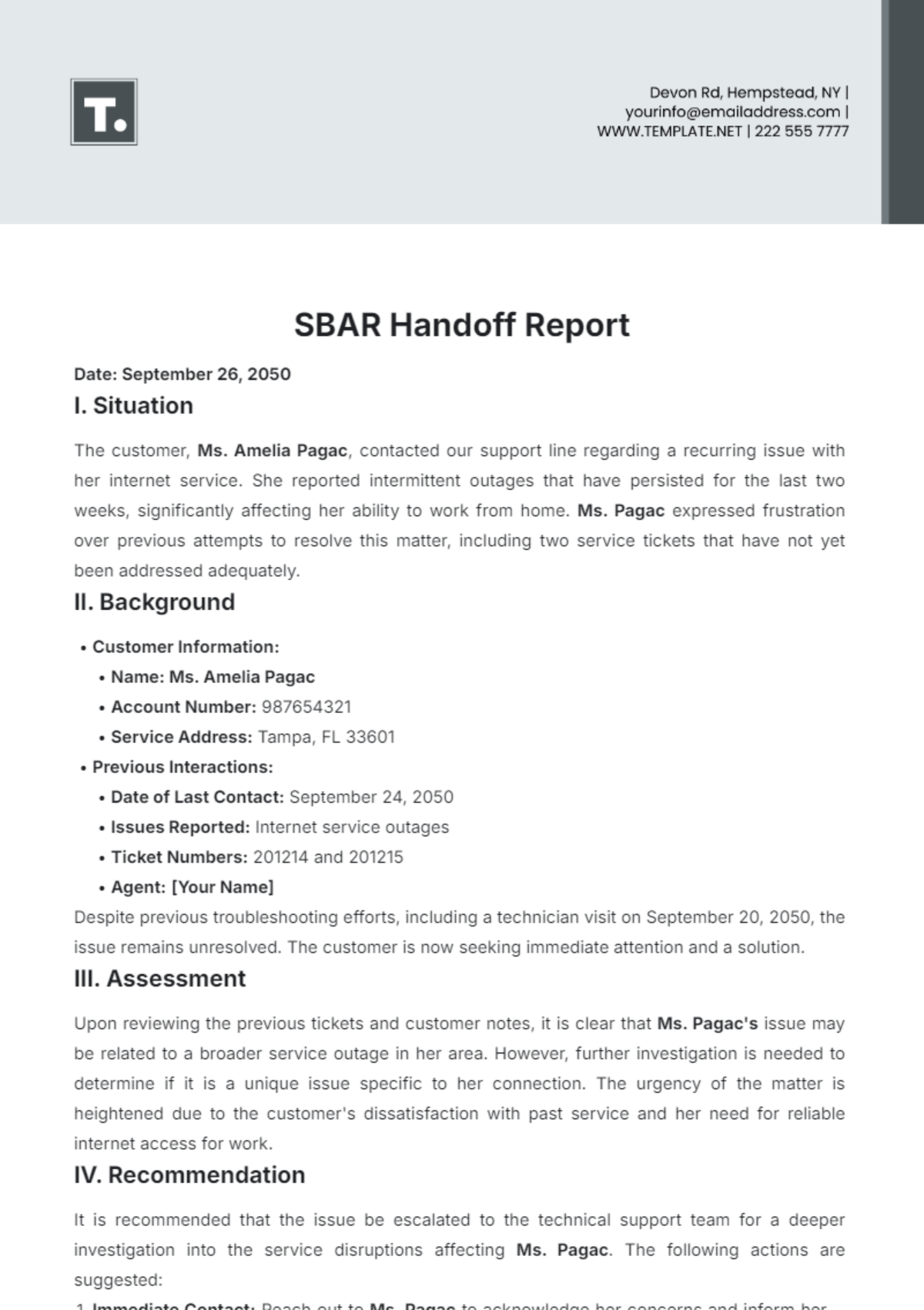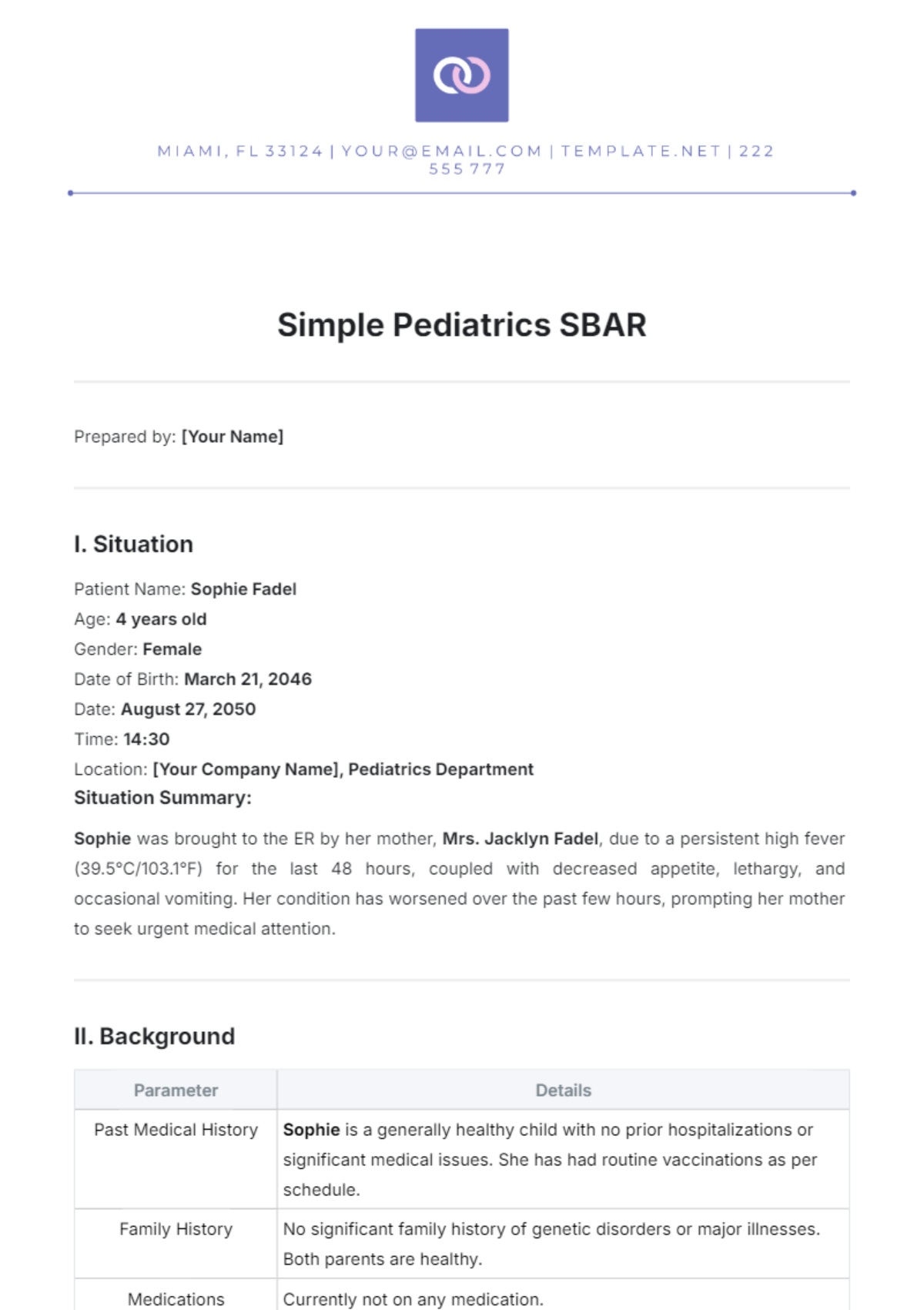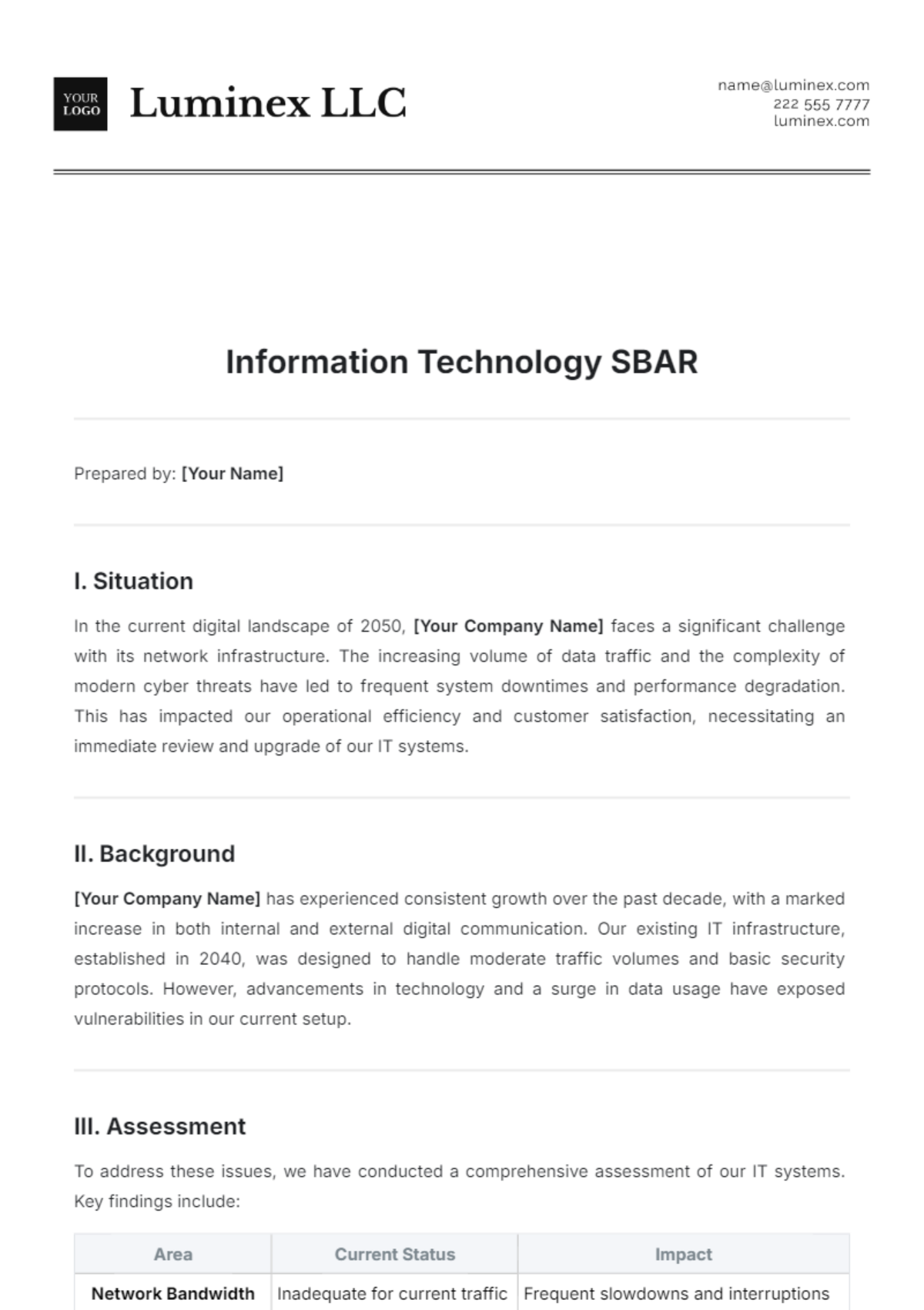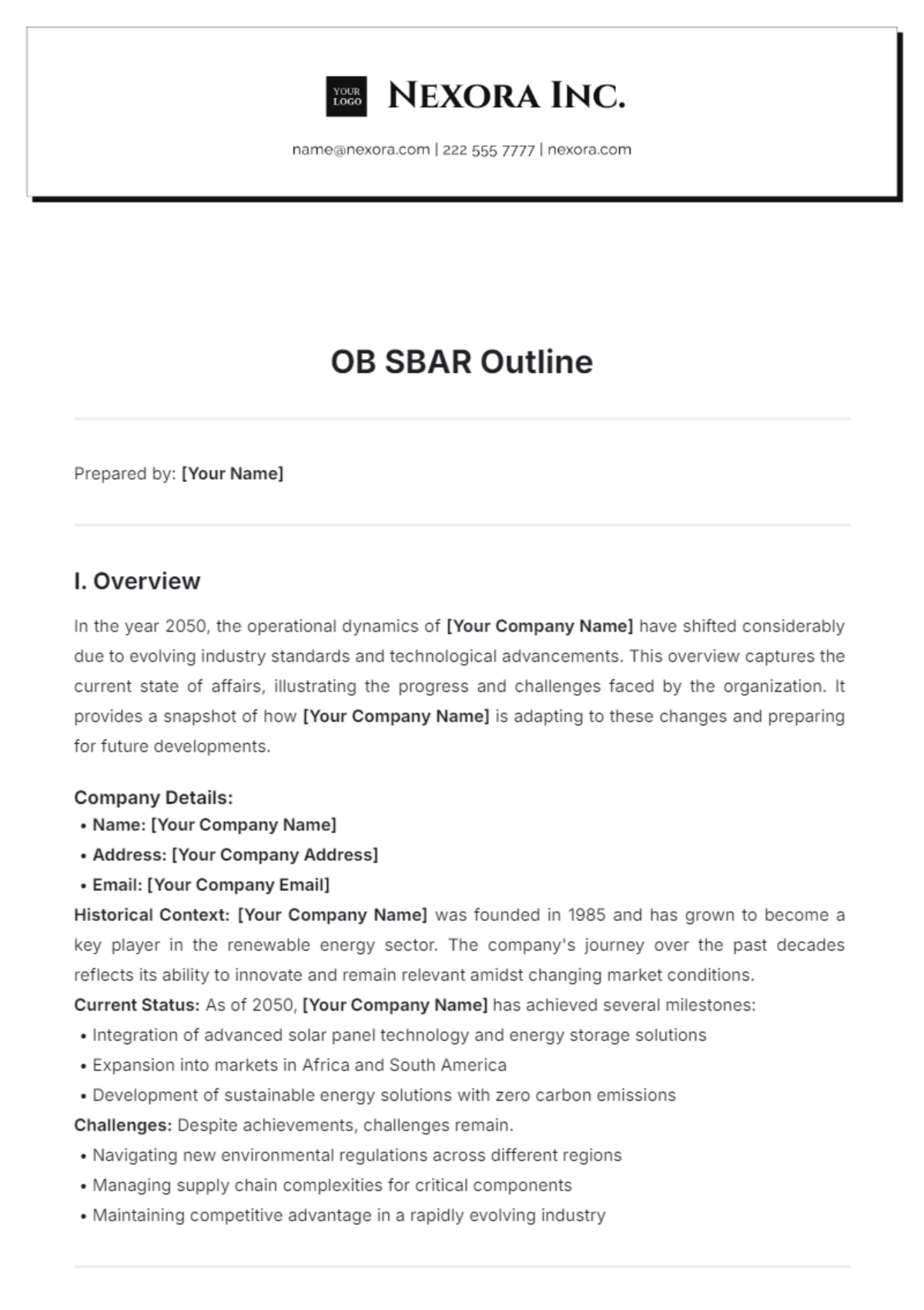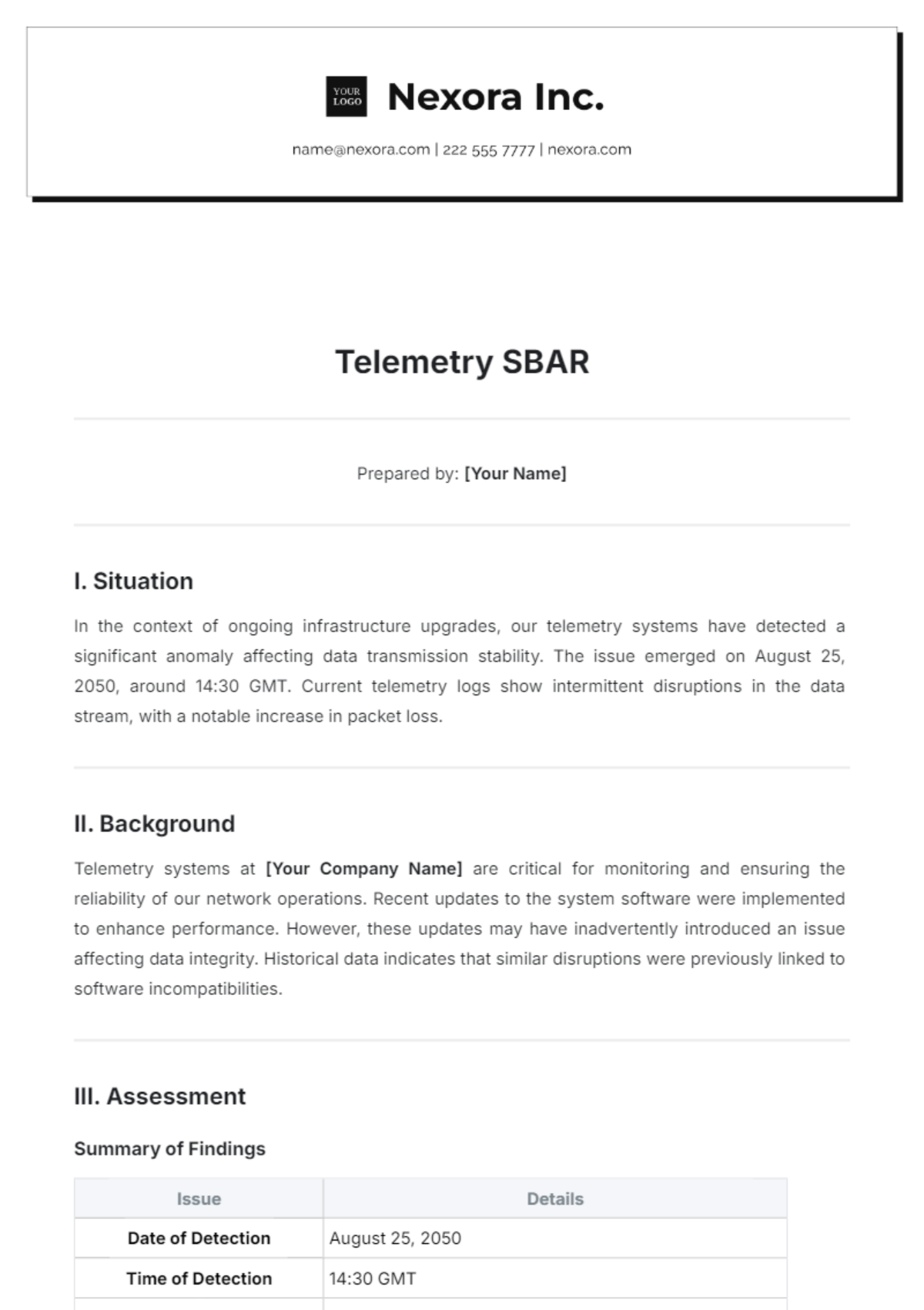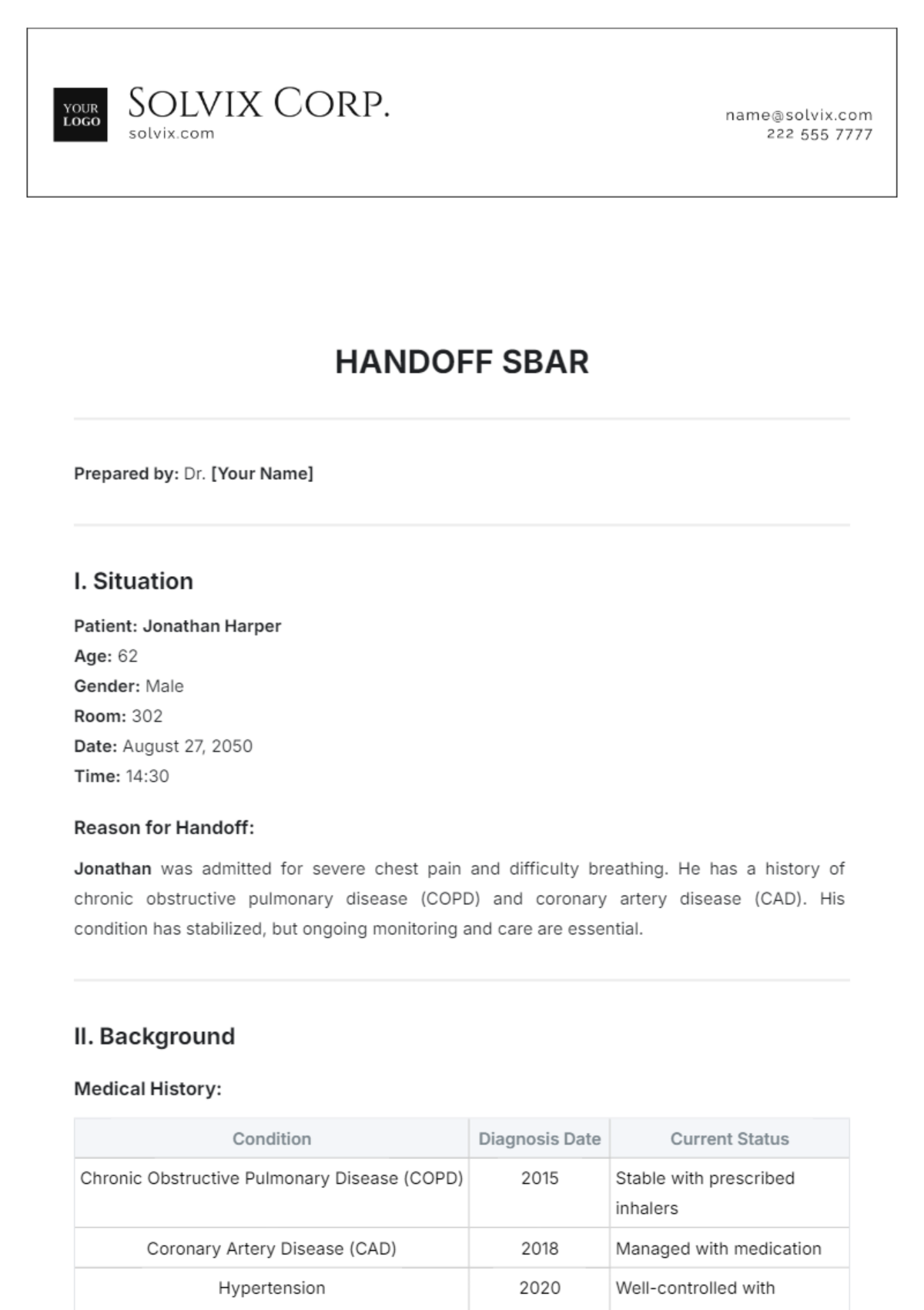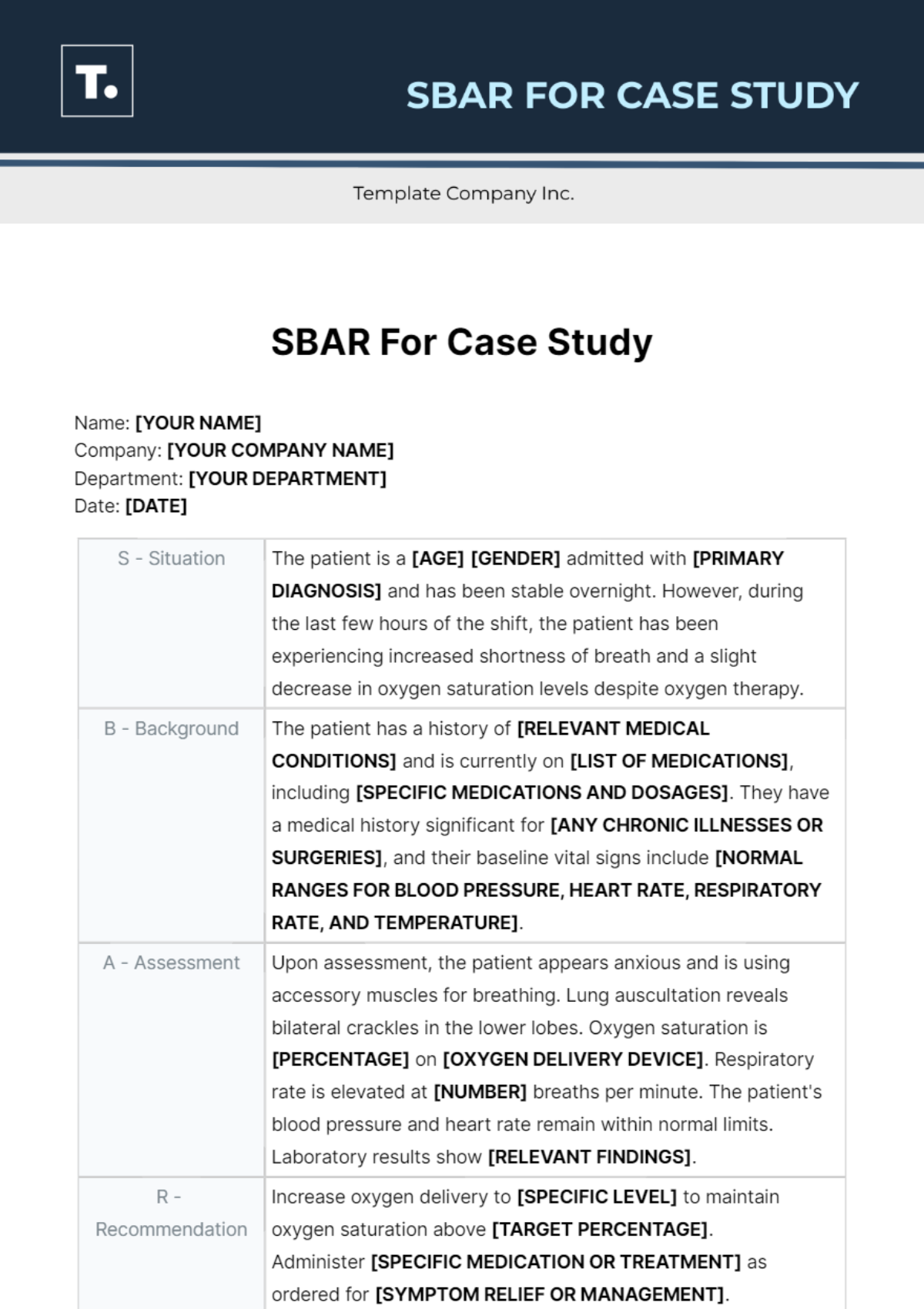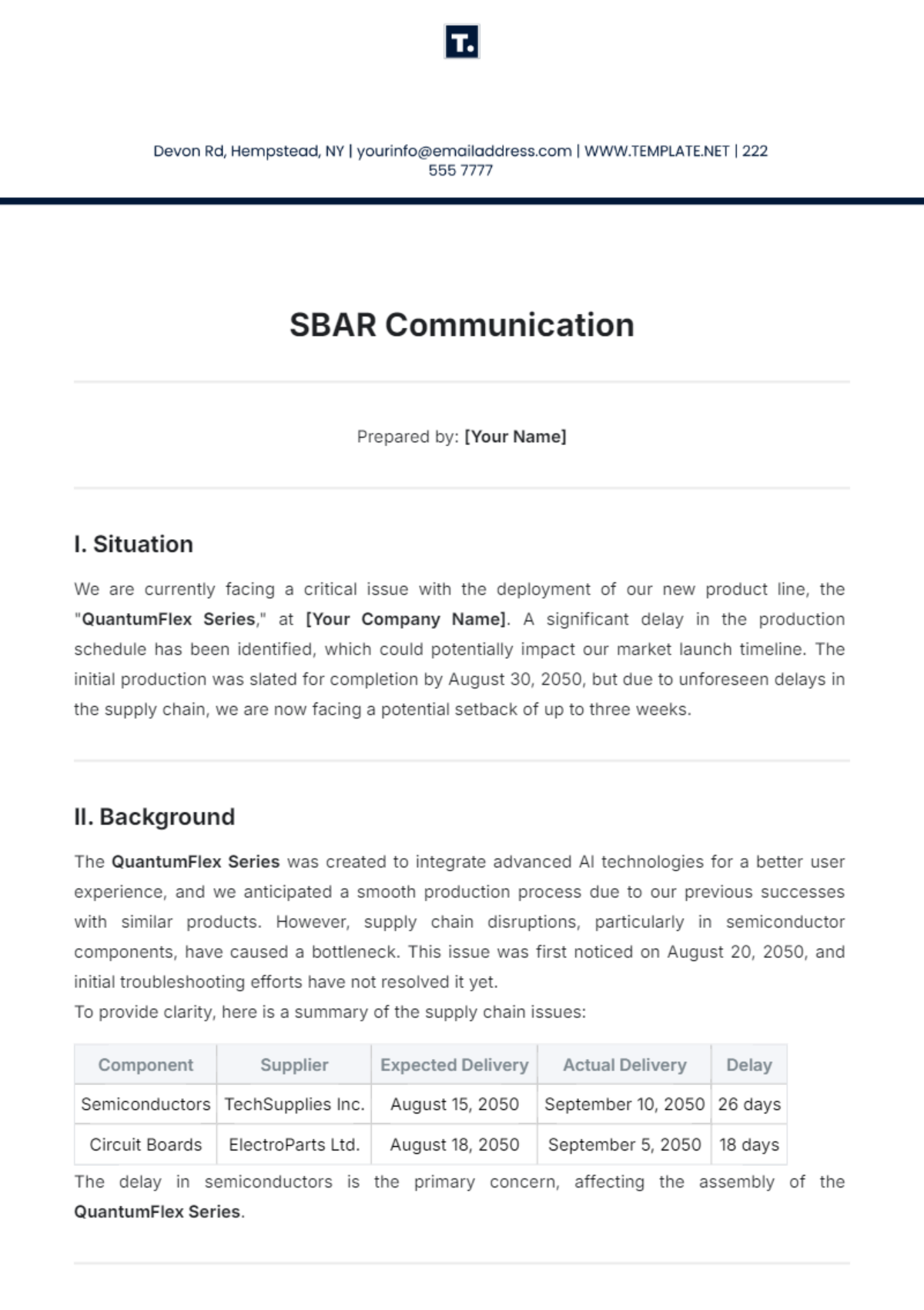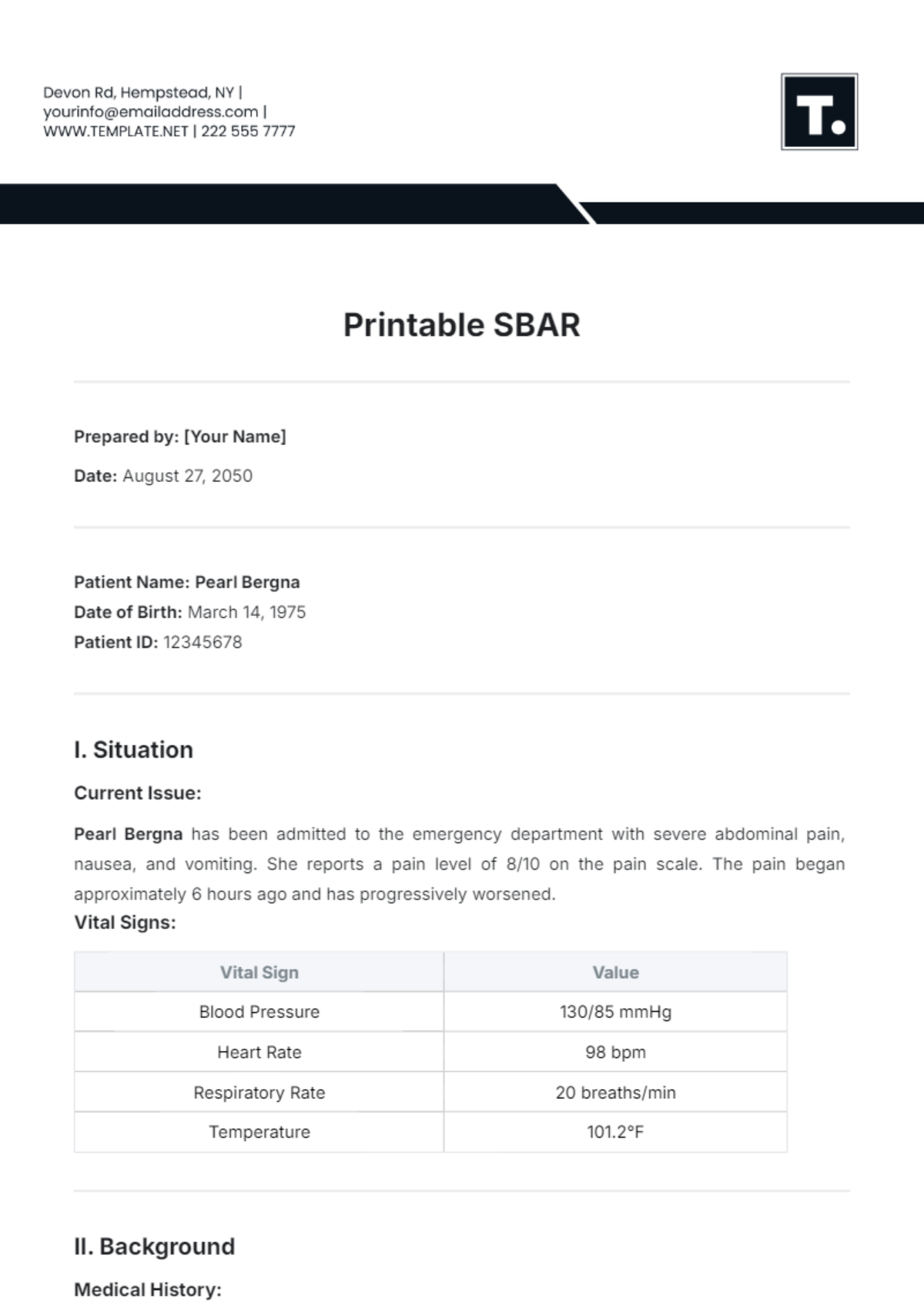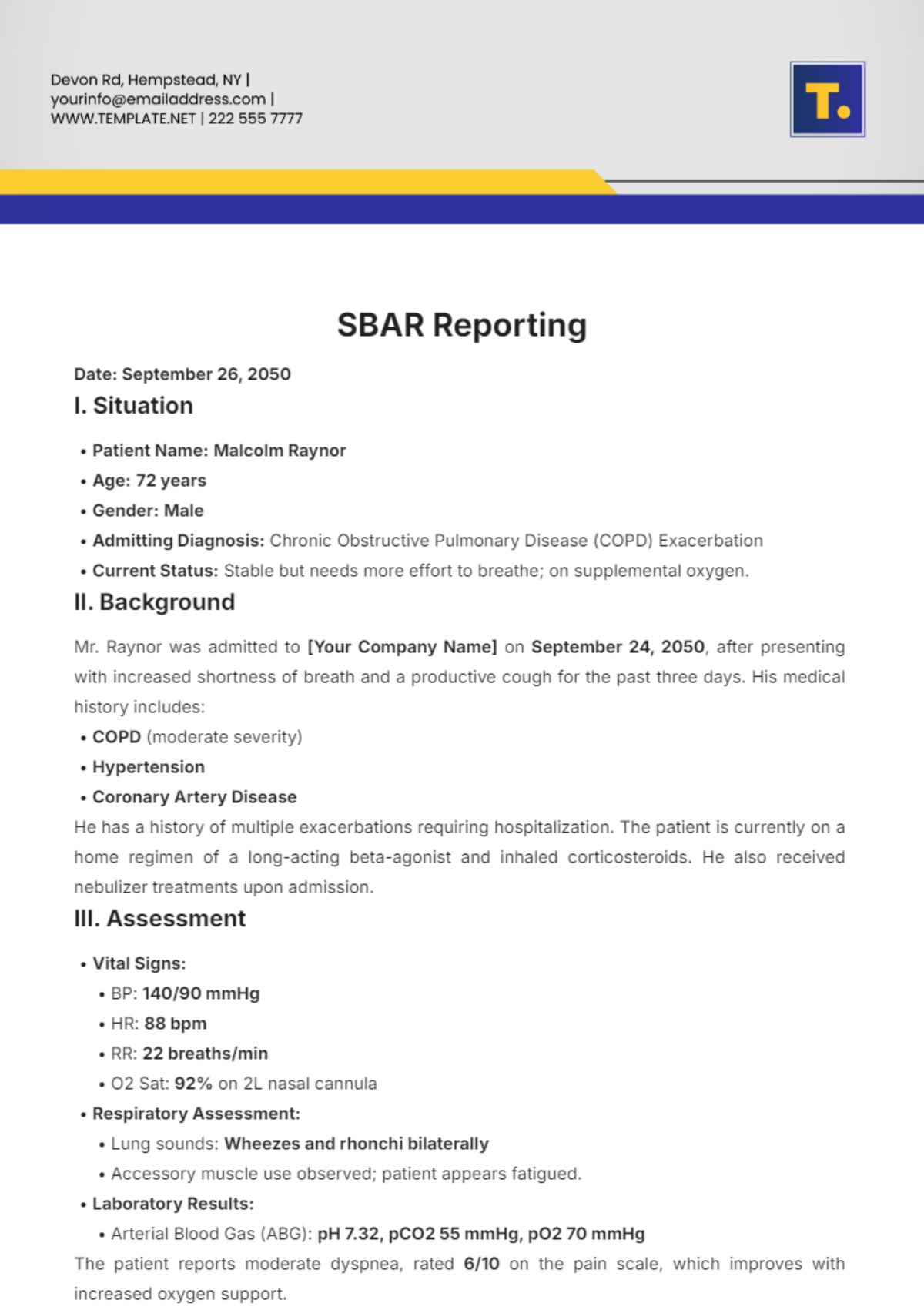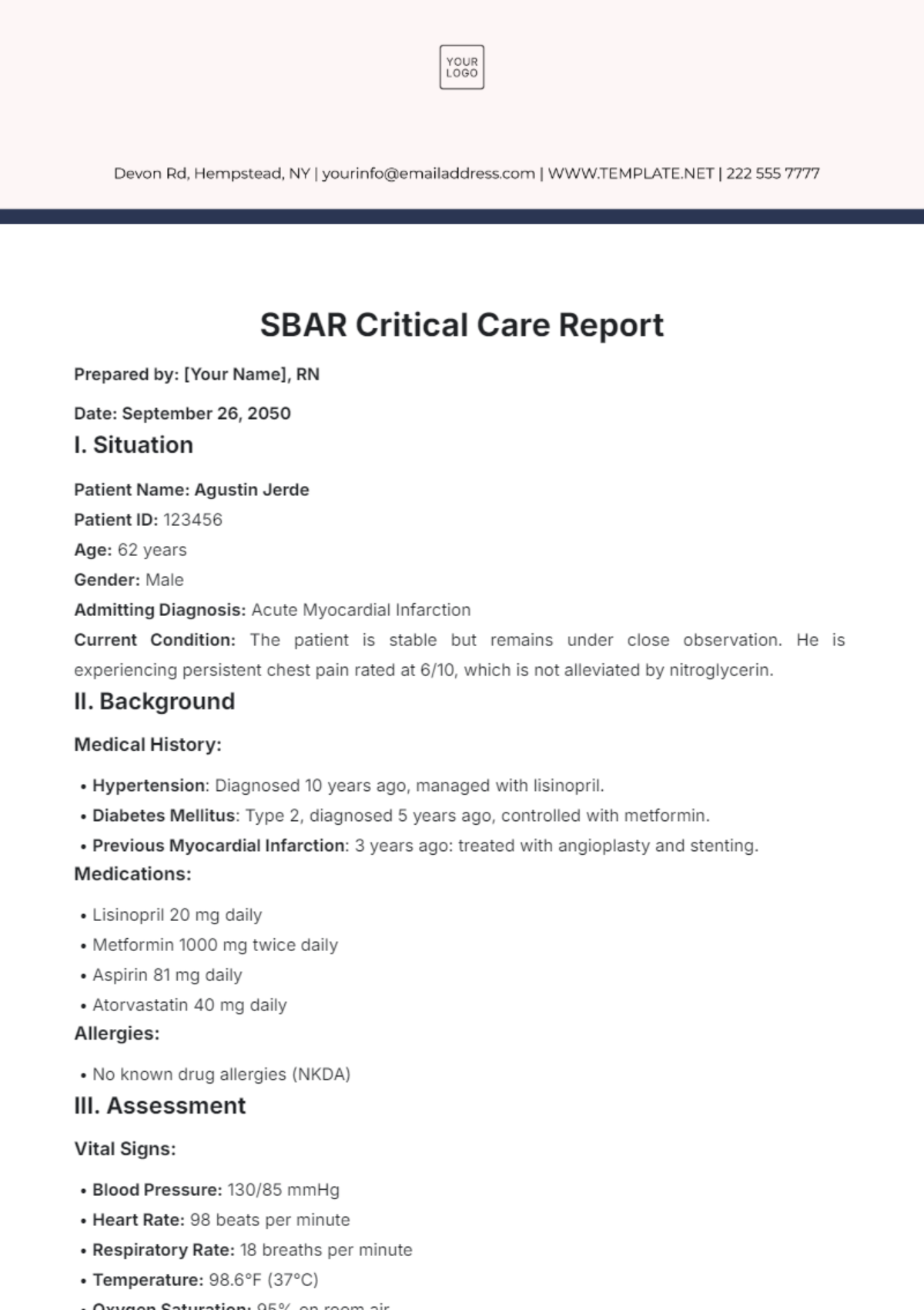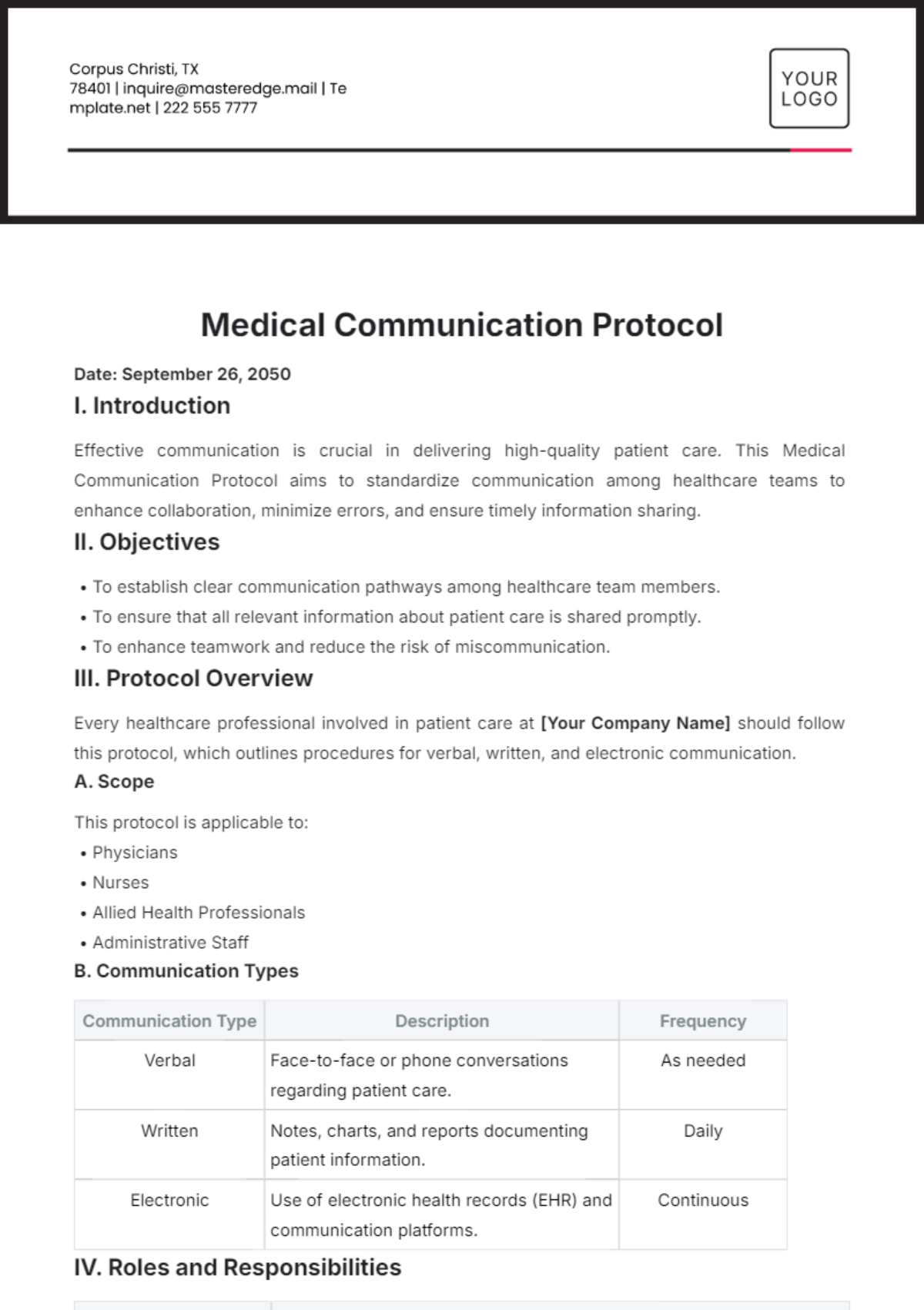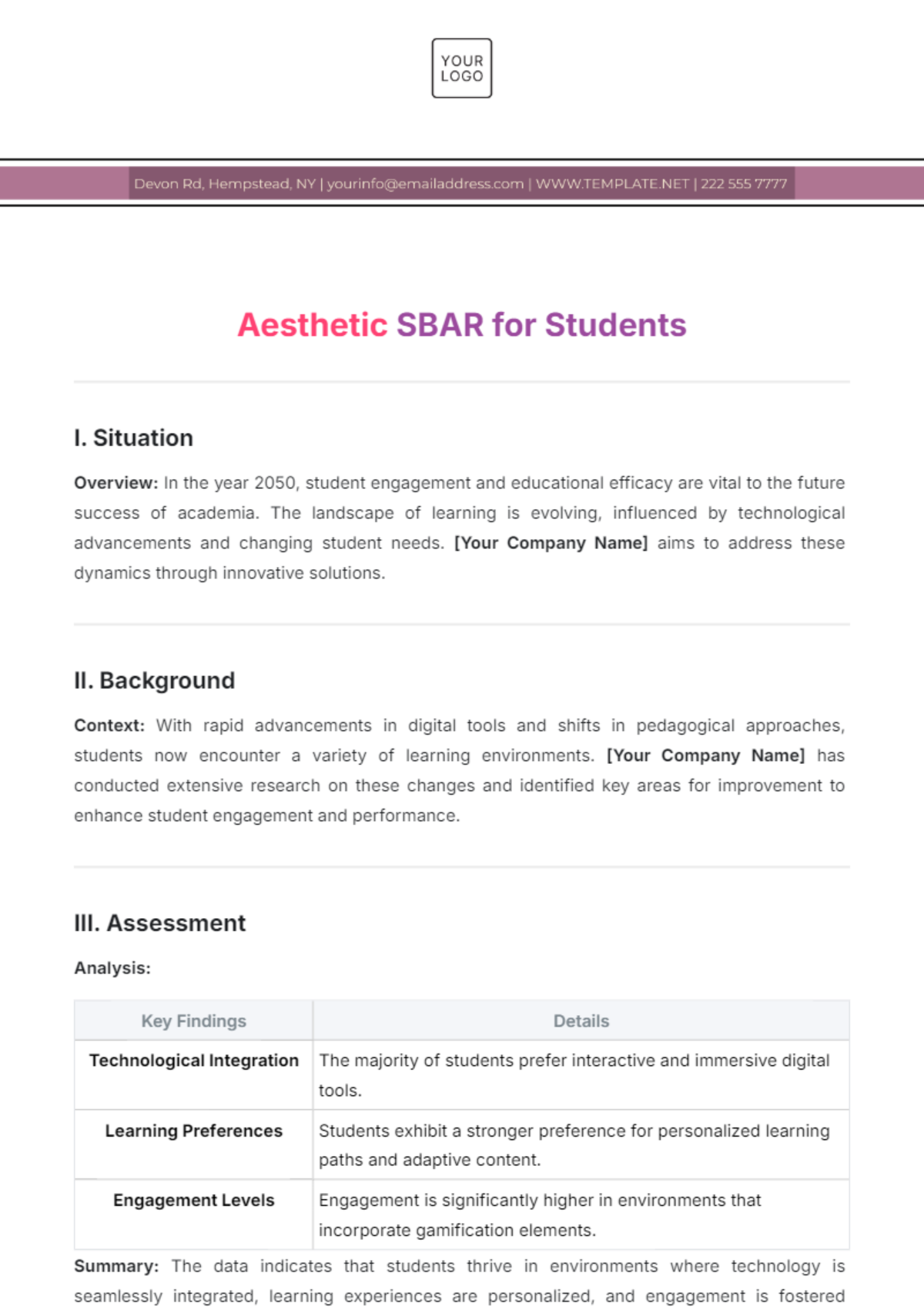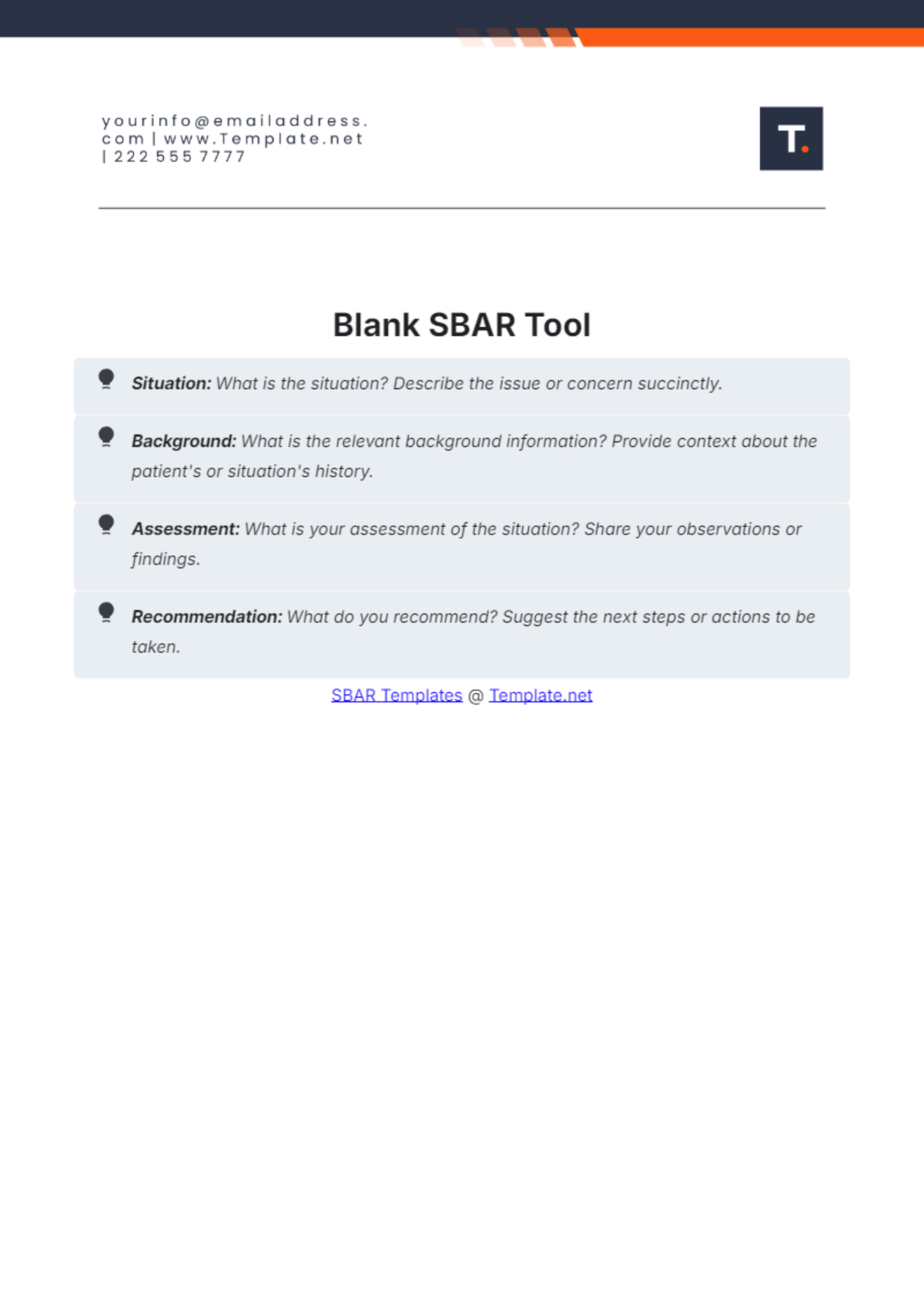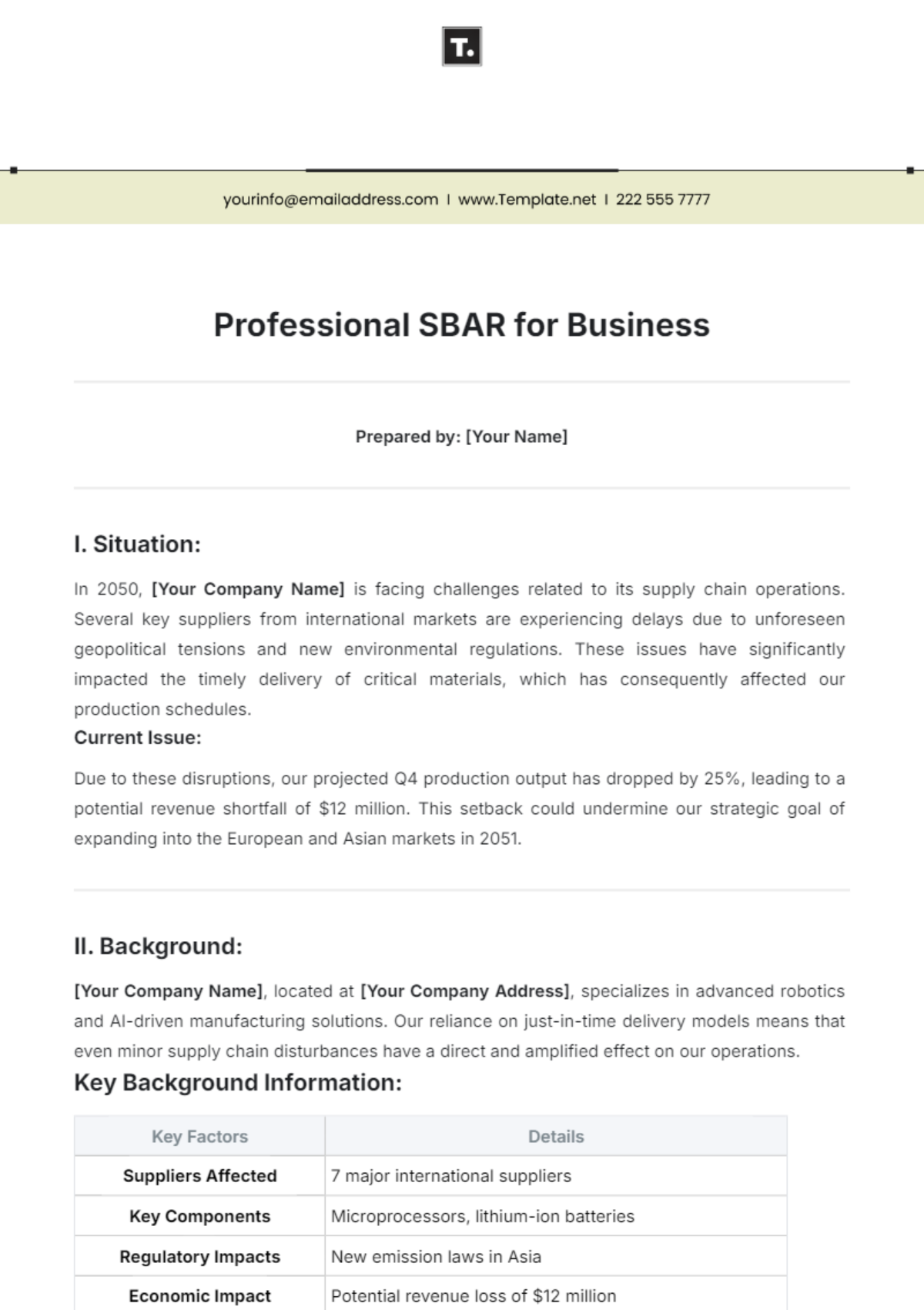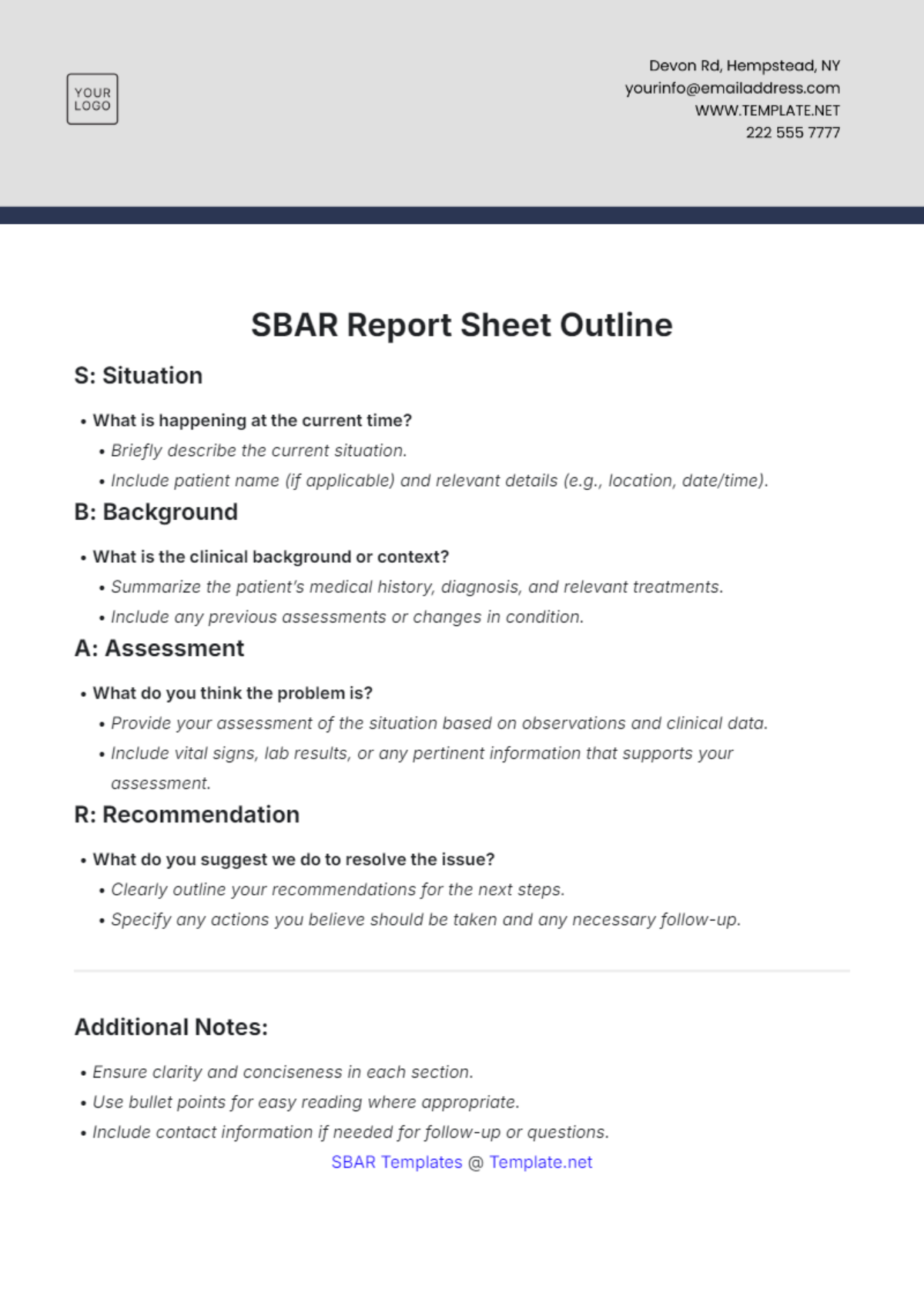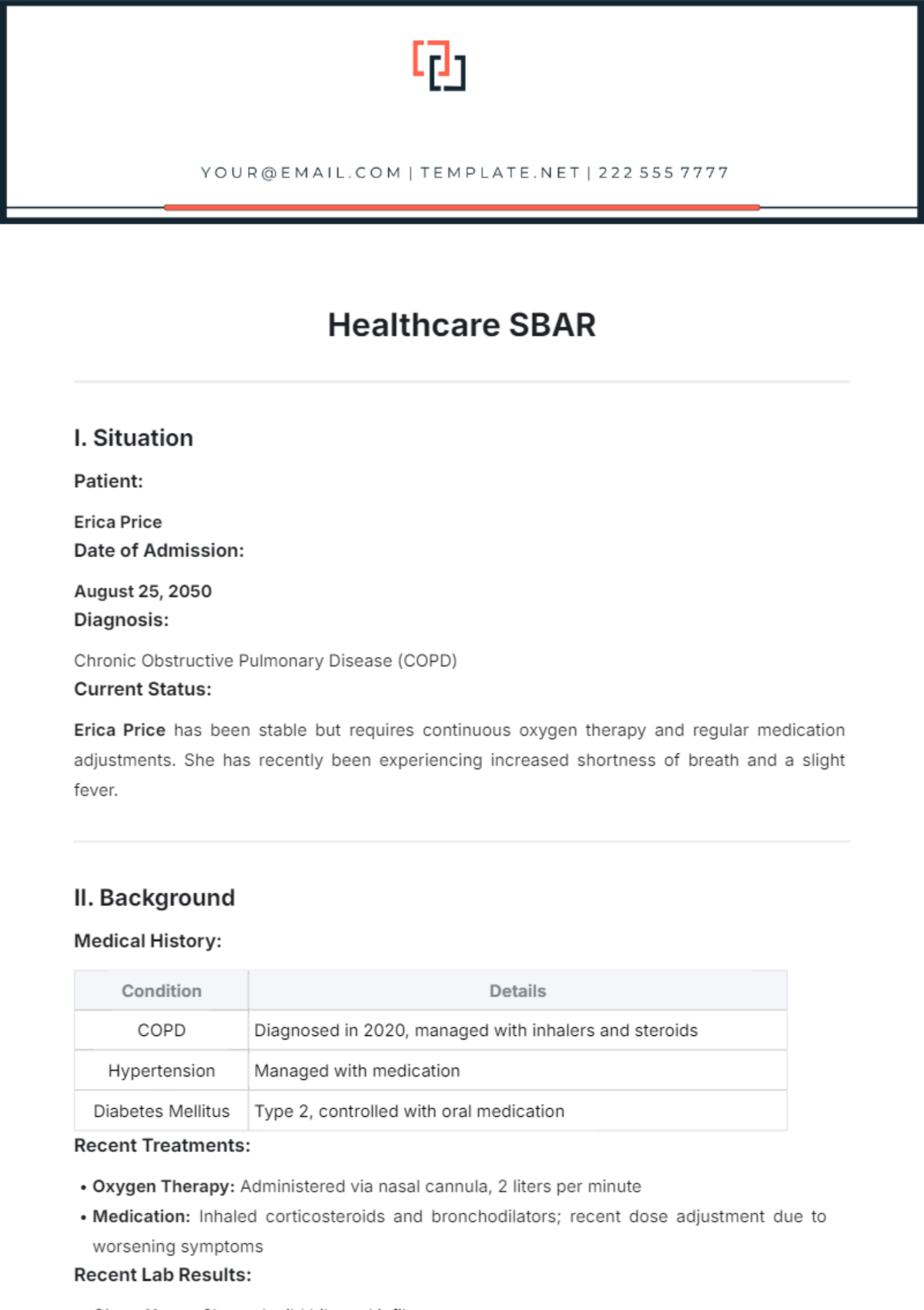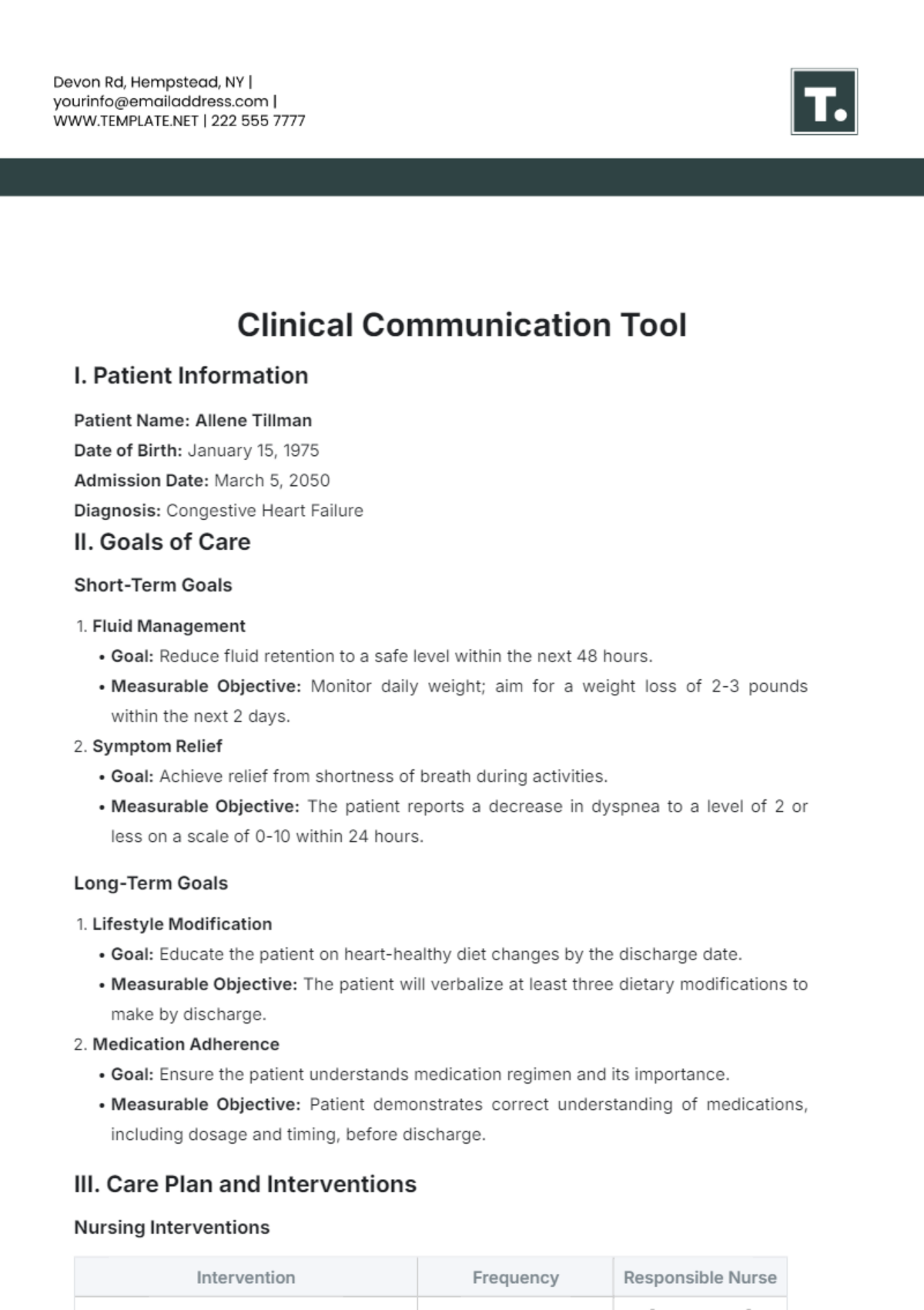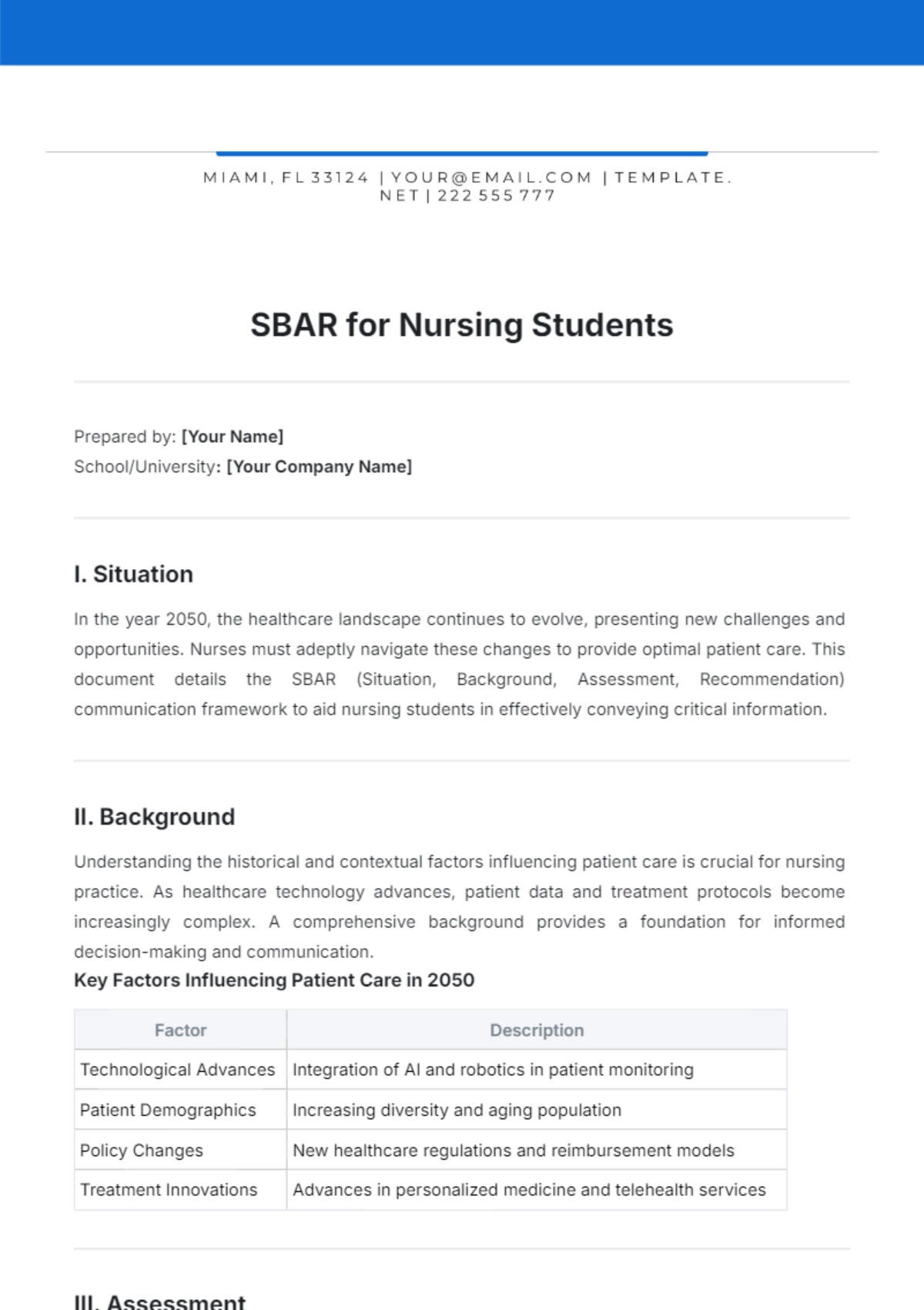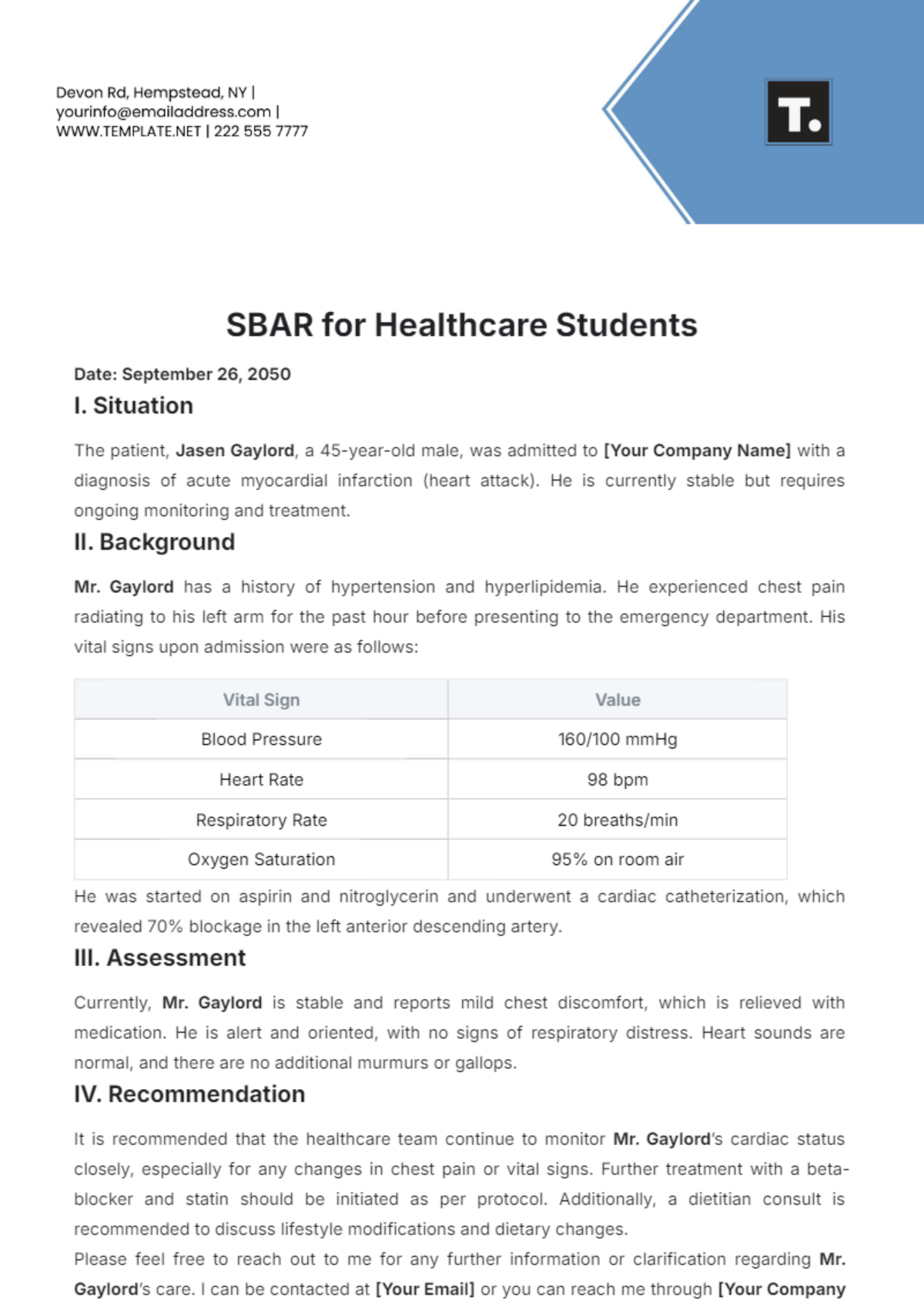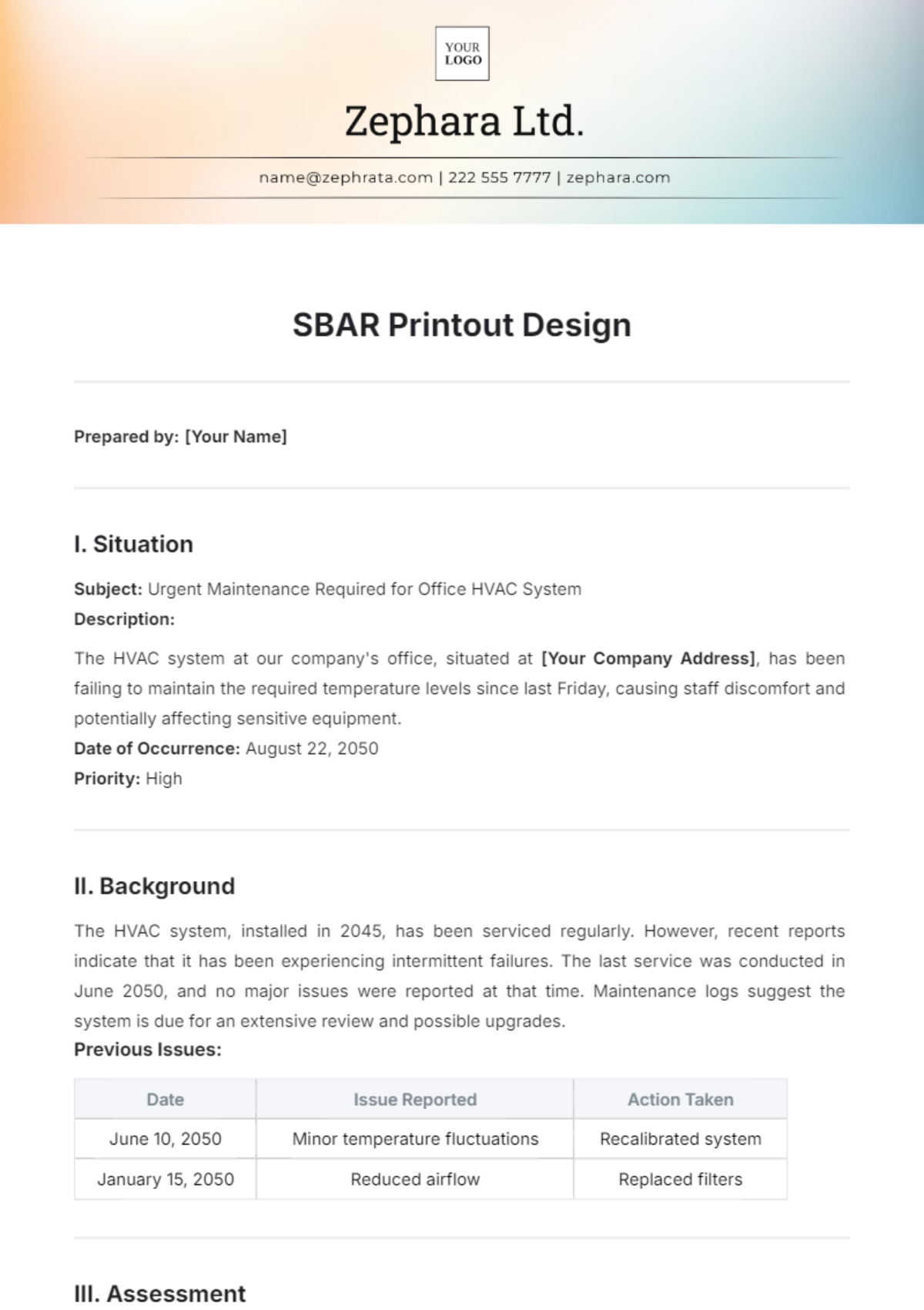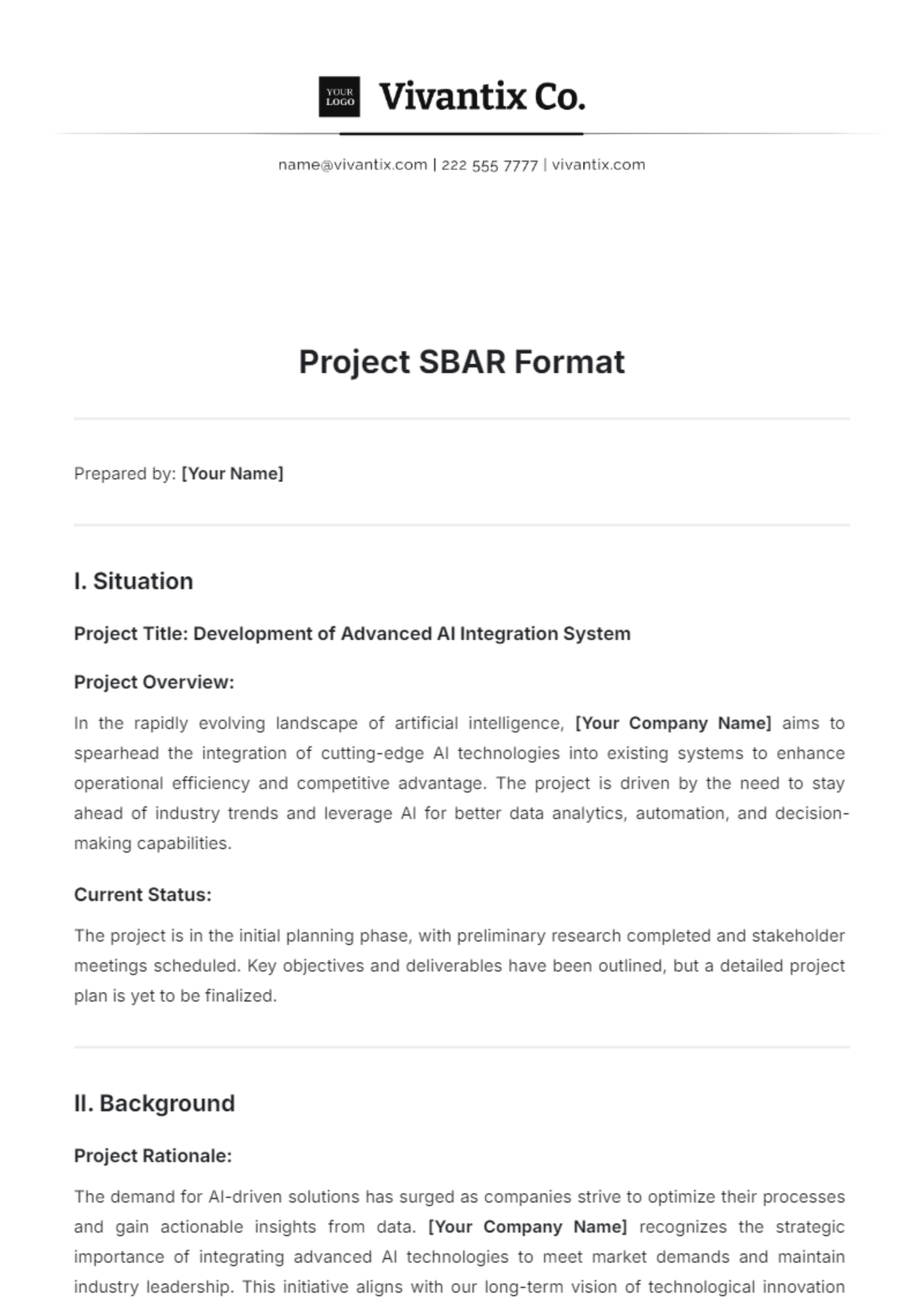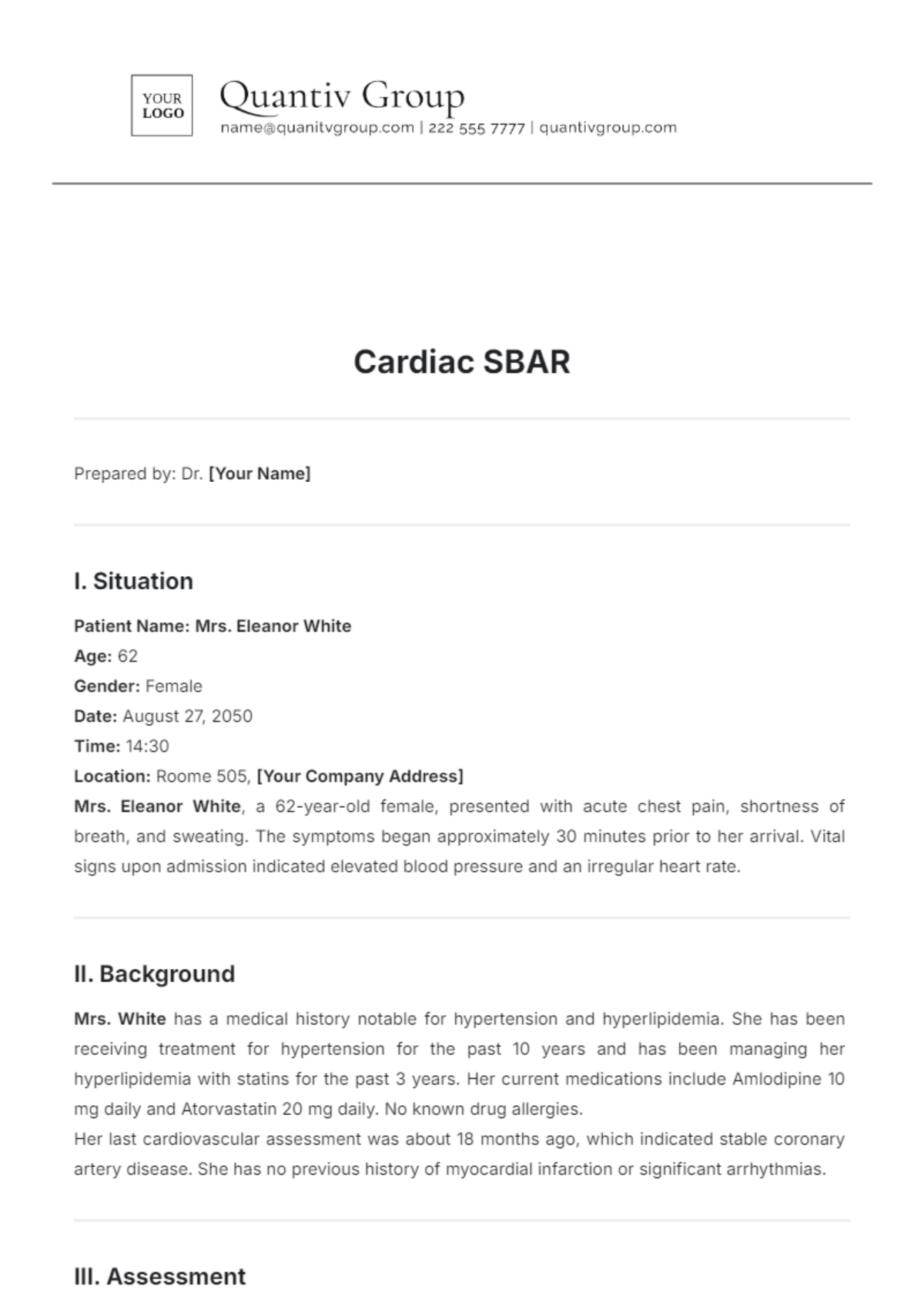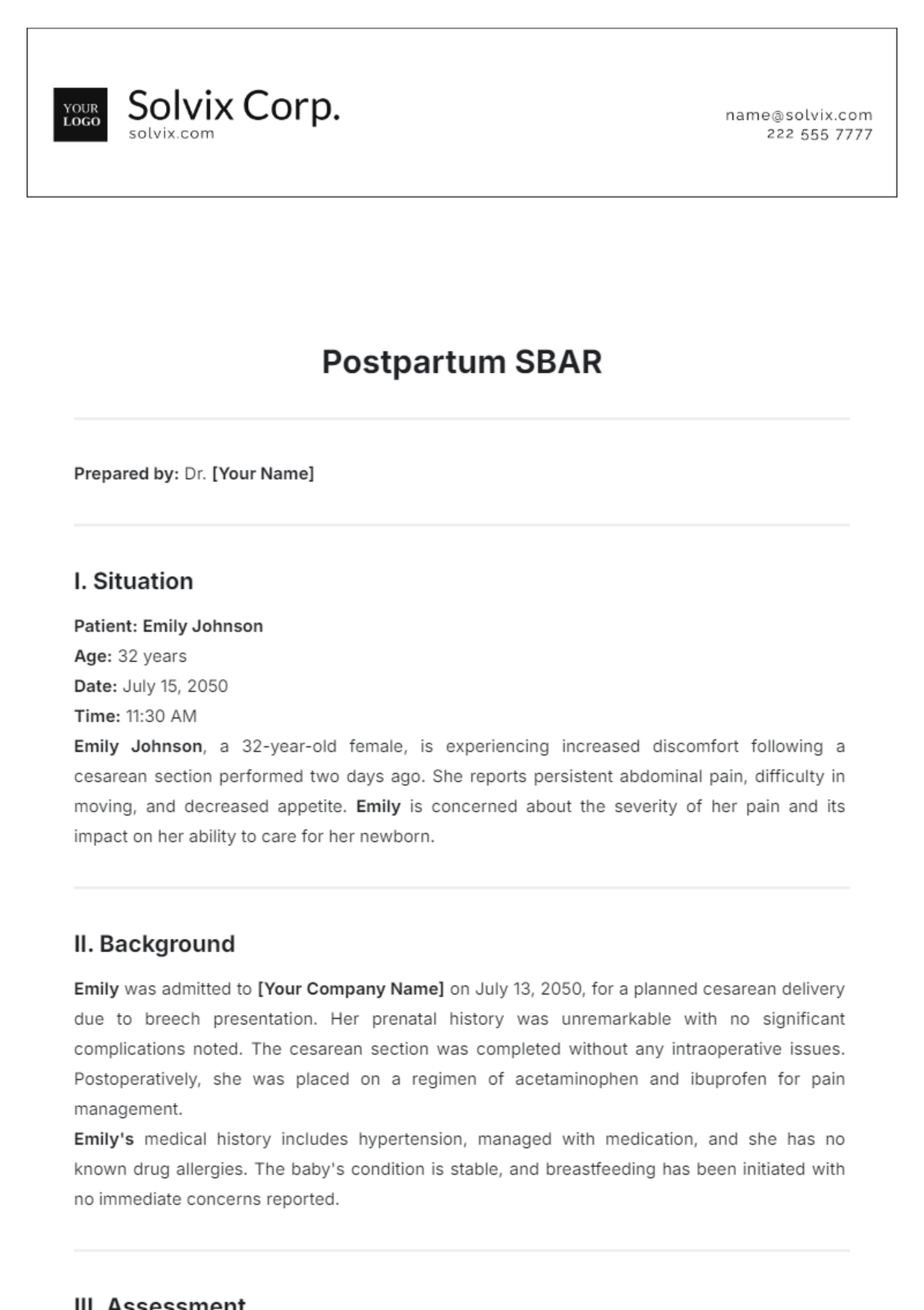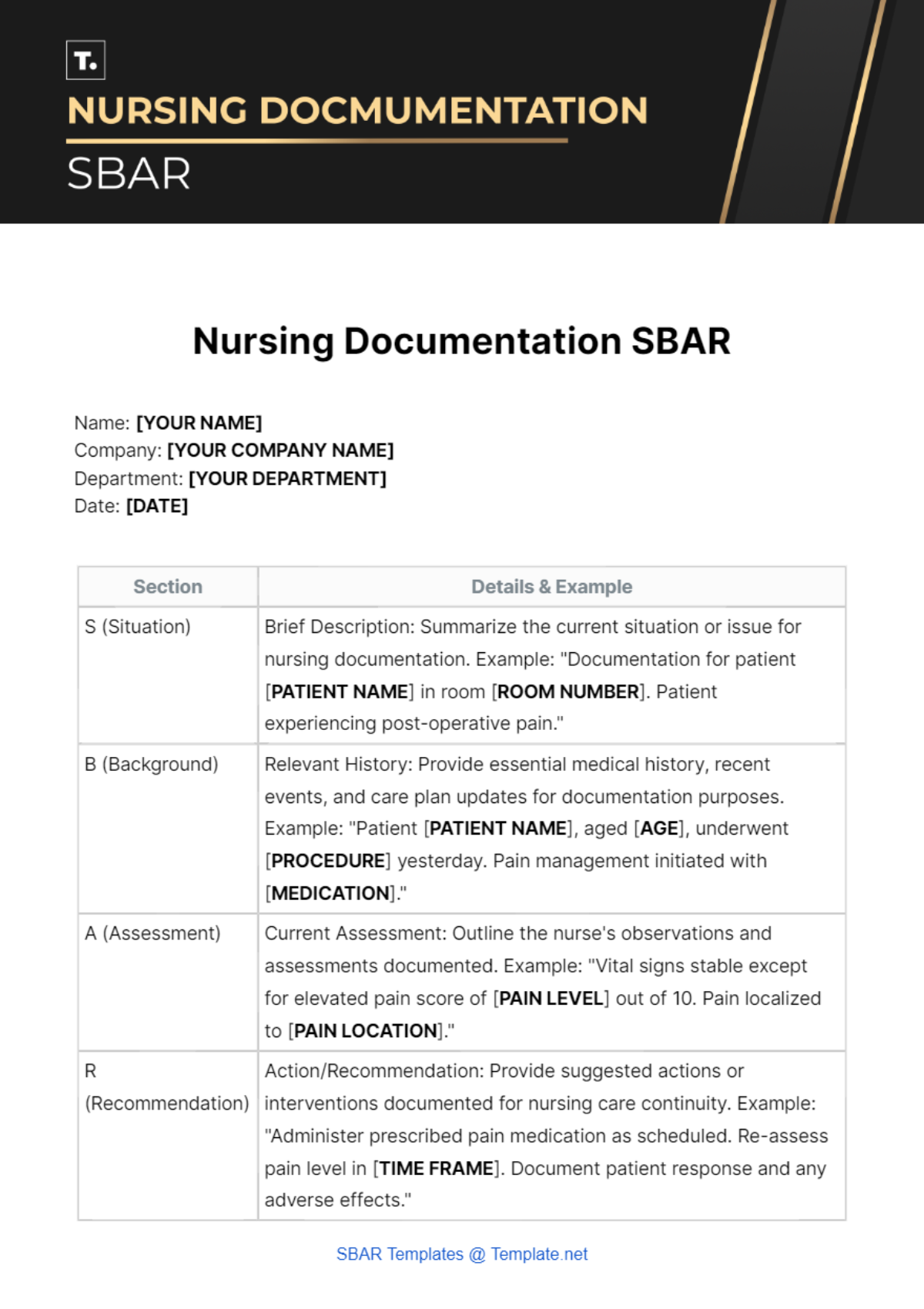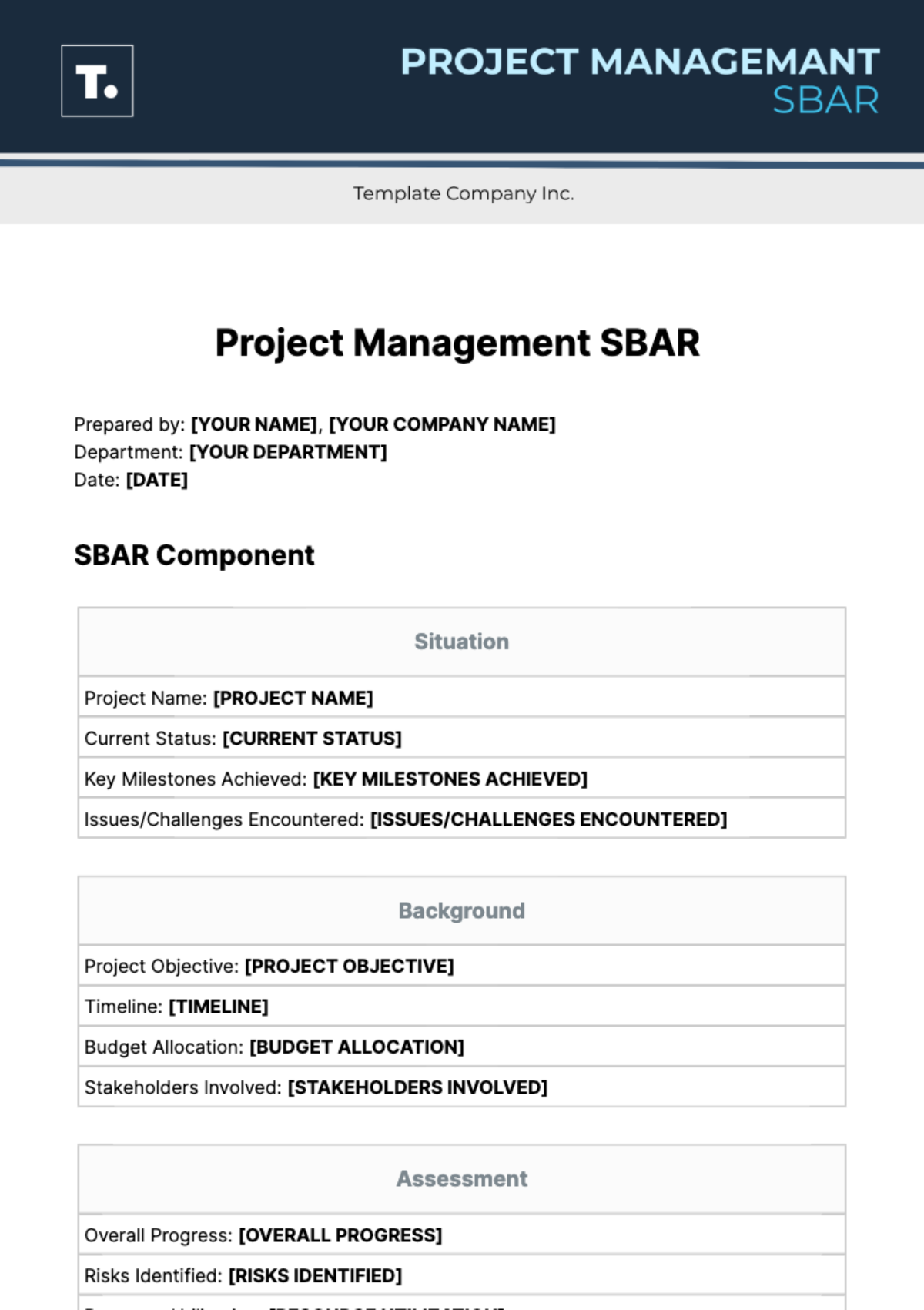SBAR For Case Study
Name: [YOUR NAME]
Company: [YOUR COMPANY NAME]
Department: [YOUR DEPARTMENT]
Date: [DATE]
S - Situation | The patient is a [AGE] [GENDER] admitted with [PRIMARY DIAGNOSIS] and has been stable overnight. However, during the last few hours of the shift, the patient has been experiencing increased shortness of breath and a slight decrease in oxygen saturation levels despite oxygen therapy. |
|---|---|
B - Background | The patient has a history of [RELEVANT MEDICAL CONDITIONS] and is currently on [LIST OF MEDICATIONS], including [SPECIFIC MEDICATIONS AND DOSAGES]. They have a medical history significant for [ANY CHRONIC ILLNESSES OR SURGERIES], and their baseline vital signs include [NORMAL RANGES FOR BLOOD PRESSURE, HEART RATE, RESPIRATORY RATE, AND TEMPERATURE]. |
A - Assessment | Upon assessment, the patient appears anxious and is using accessory muscles for breathing. Lung auscultation reveals bilateral crackles in the lower lobes. Oxygen saturation is [PERCENTAGE] on [OXYGEN DELIVERY DEVICE]. Respiratory rate is elevated at [NUMBER] breaths per minute. The patient's blood pressure and heart rate remain within normal limits. Laboratory results show [RELEVANT FINDINGS]. |
R - Recommendation | Increase oxygen delivery to [SPECIFIC LEVEL] to maintain oxygen saturation above [TARGET PERCENTAGE]. Administer [SPECIFIC MEDICATION OR TREATMENT] as ordered for [SYMPTOM RELIEF OR MANAGEMENT]. Notify the attending physician of the change in the patient's condition and request further assessment. Consider a chest X-ray to evaluate for possible pneumonia or worsening of underlying lung disease. Continue close monitoring of vital signs, oxygen saturation, and respiratory effort. Ensure patient education regarding deep breathing exercises and incentive spirometry to improve lung function and decrease anxiety. |
Additional Notes: [Any additional information or concerns related to the patient's condition]
